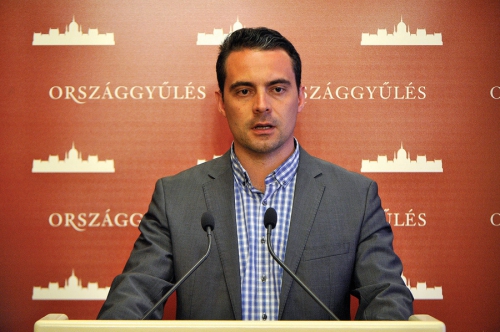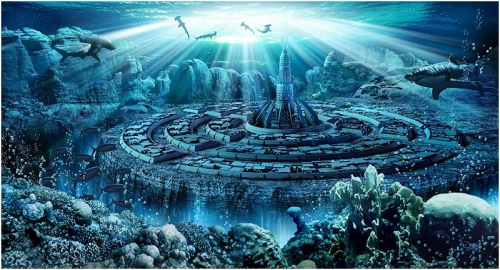
L'Atlantide contre l'Atlantisme
par Laurent James
Voici le texte de mon intervention aux Rencontres Eurasistes de Bordeaux, le 5 septembre dernier
Le but de mon intervention est de montrer les principes de l’Atlantide et de l’atlantisme afin d’éviter toute confusion entre les deux. La confusion contemporaine entre l’eurasisme et le mondialisme est fondamentalement basée sur les mêmes erreurs, et j’expliciterai les raisons pour lesquelles ce sont, précisément, le nationalisme, le marxisme et le complotisme (tous regroupés sous le terme générique de « dissidence » qui la propagent.
On peut trouver sur le site de VoxNR un texte inédit de Douguine. Il s’agit du chapitre 3 d’un livre titré « Misterii Evrazii » (Les Mystères de l’Eurasie »), un ouvrage paru en Russie en 1996, puis traduit en espagnol et en italien mais pas encore en français. Douguine y développe les motivations ésotéristes du combat eurasiste, lesquelles ne sont pas tellement connues.
A ce sujet, on peut noter que c’était précisément pour présenter ces aspects, que nous l’avions invité à Rennes-le-Château le 18 janvier de cette année pour une journée de conférences avec, entre autres, André Douzet, Erik Sablé, Walid Nazim, Tony Baillargeat et Constantin Parvulesco. Ce dernier devait présenter à cette occasion des « Interprétations alchimiques du Saint-Suaire ». J’en profite pour insister sur un point évoqué dans mon dernier texte paru sur le blog de Parousia, à propos de Paul-Eric Blanrue. Selon la tradition, le Suaire est le Linceul, cité par les Evangiles, qui servit à envelopper le corps du Christ au tombeau. Il renvoie directement à la réalité de la Passion, et c’est pour cette raison que Jean-Paul II l'a défini comme étant le « miroir de l'Evangile ». Tous les révisionnistes du Saint-Suaire sont nos ennemis absolus, à nous autres catholiques intégraux et soldats du Christ. Que cela soit bien clair !
Excusez-moi de parler de ça cinq minutes encore, même si ça semble hors sujet. Ça ne l’est pas, en réalité. Certains me reprochent de parler parfois de sujets subalternes, comme la querelle entre Yann Moix et Paul-Eric Blanrue. Je trouve au contraire qu’il est très intéressant d’insister sur le fait que ce n’est pas parce que le premier est un atroce écrivain béhachélien que le second a forcément raison. Voici ce que Blanrue a écrit dans le n°141 de « L’Homme libre, fils de la terre (Recherche d’une psychologie libératrice) », en octobre 1994 :
"J’aimerais aborder tranquillement les questions de l’historicité du Christ (rien ne prouve que Jésus soit autre chose qu’un mythe syncrétiste judéo-païen), de la mystification de la Salette (une des rares « apparitions » à avoir été jugée comme arnaque), des problèmes archéologiques liés à la découverte un peu trop providentielle du Saint Sépulcre (trois siècles après les prétendus événements)".
C’est le problème principal du révisionnisme, ça ne s’arrête pas aux portes des chambres à gaz. Dans le même texte, il parle de « la vieille Eglise catholique en pleine phase déliquescente ».
Lorsqu’on passe des années à saper les fondements du catholicisme en usant d’une arme aussi profane qu’est le zététisme voltairien (il faut savoir que Voltaire est la référence majeure de Blanrue), et que l’on se convertit ensuite à l’islam après avoir constaté qu’il n’y avait plus de valeurs dans le catholicisme, je pense qu’on est inconséquent, c’est le moins que l’on puisse dire. Pourquoi Blanrue ne continue-t-il pas sur sa lancée voltairienne, et ne démontre-t-il pas maintenant, par exemple, que la Kaaba n’a jamais été construite par Abraham ? Il publierait son étude sous le titre « Le secret de la Kaaba : autopsie d’une escroquerie », et là, il aurait une certaine cohérence !
On peut se convertir à l’islam pour de très bonnes raisons, mais on peut aussi le faire pour de très mauvaises. De manière générale, le mot conversion est banni de mon vocabulaire. La seule conversion légitime est le retour à la foi de ses parents, ou de ses grands-parents. A condition que celle-ci soit légitime et justifiée, bien sûr ! Pour rester dans le monde chrétien : la fidélité à ses parents quand ils sont évangélistes ou Témoins de Jéhovah est, en réalité, une trahison complète envers la Tradition. Un de mes amis a trahi la foi protestante helvétique de sa famille, en venant se faire déprotestantiser à Marseille par le Père Zanotti-Sorkine. Voilà un bel exemple de fidélité absolue !
Revenons à Rennes-le-Château. Douguine connait parfaitement l’importance métahistorique de la région du Razès. Il désirait établir avec nous une connexion solide entre le Royaume d’Araucanie et la Sainte-Russie sur une des places fortes de la Gaule surnaturelle et enchantée. Ainsi que je l’ai dit, sa conférence devait porter sur les racines ésotéristes de l’eurasisme.
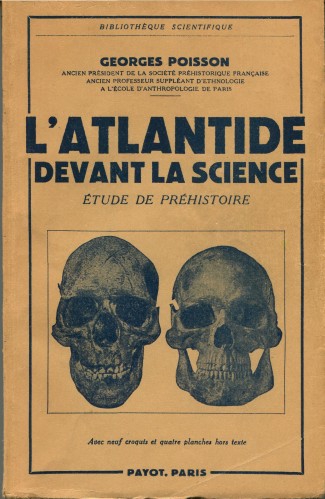 Comme vous le savez peut-être, une poignée de très sombres individus a réussi à faire capoter le projet cinq jours avant qu’il n’ait lieu. La version officielle réside dans la lâcheté de l’organisateur, qui en trahissant Alexandre Douguine, a également trahitoute la famille Parvulesco : le grand-père Jean, le père Constantin (qui avait immédiatement décidé d'annuler sa venue en apprenant la censure de Douguine), et le fils Stanislas. Mais nous sommes aussi parfaitement au courant des manipulations effectuées dans l’ombre par d’autres personnages, ésotéristes de troisième zone et guénolâtres stériles. Certains d’entre eux se sont d’ailleurs publiquement réjouis de l’annulation de cette conférence, assurés de leur impunité. Qu’ils sachent que nous les avons tout à fait identifiés, et que la riposte sera à la hauteur de leur lâcheté.
Comme vous le savez peut-être, une poignée de très sombres individus a réussi à faire capoter le projet cinq jours avant qu’il n’ait lieu. La version officielle réside dans la lâcheté de l’organisateur, qui en trahissant Alexandre Douguine, a également trahitoute la famille Parvulesco : le grand-père Jean, le père Constantin (qui avait immédiatement décidé d'annuler sa venue en apprenant la censure de Douguine), et le fils Stanislas. Mais nous sommes aussi parfaitement au courant des manipulations effectuées dans l’ombre par d’autres personnages, ésotéristes de troisième zone et guénolâtres stériles. Certains d’entre eux se sont d’ailleurs publiquement réjouis de l’annulation de cette conférence, assurés de leur impunité. Qu’ils sachent que nous les avons tout à fait identifiés, et que la riposte sera à la hauteur de leur lâcheté.
Je reviens à ce chapitre écrit par Douguine, diffusé sous forme de samizdat en 1988, portant sur « L’Amérique, ou la Terre verte ». Il y examine les « dessous mythologiques de l’Amérique », disant que (je cite) « si une telle idée de l’Amérique a pu s’enraciner dans la conscience géopolitique universelle et devenir quelque chose de néo-sacral, il doit y avoir à cela des raisons très sérieuses associées à l’inconscient collectif de l’humanité, et à cette géographie secrète continentale qui plonge ses racines dans les millénaires mais dont le souvenir continue à vivre comme archétypes psychiques ».
Il commence par noter que le continent américain était connu, « longtemps avant le voyage de Christophe Colomb », notamment par les Vikings. Ceci est aujourd’hui validé par presque tout le monde, et l’arrivée de Leif Erikson à Terre-Neuve, par exemple, est une chose établie. Sans parler du grand voyage de saint Brendan de Clonfert et saint Malo jusqu’au Québec au VIè siècle. Sur la question des Vikings en Amérique, je ne saurais trop conseiller de lire les ouvrages de Jacques de Mahieu (dont le fils Xavier Marie se livre aujourd’hui à des activités politiques intéressantes en Argentine). Jacques de Mahieu, professeur et directeur de l'Institut des Sciences de l'Homme de Buenos Aires dans les années 70 et 80, a étudié de nombreuses cartes géographiques précolombiennes, dont la célèbre carte de l’amiral ottoman Piri Reis, dérobée à un compagnon de Colomb après un combat naval. Cette carte représente de manière très précise l’Amérique du nord et du sud, ainsi que le Groenland et l’Antarctique. Pour Jacques de Mahieu, ces connaissances géographiques remontent au moins jusqu’aux Vikings, qui se seraient implantés au Pérou pour y fonder l’empire de Tiahanacu, ancêtre des Incas, et qui seraient à l’origine de la production métallurgique dans ce pays (mines d’or et d’argent). Il pensait même que la richesse des Templiers, qui financèrent la construction de 80 cathédrales gothiques en moins de cent ans, provenait de l’exploitation industrielle de ces mines et de leur réception au « port secret du Temple », celui de la Rochelle.
Cependant, la connaissance du continent américain est peut-être bien antérieure encore. L’amiral Piri Reis affirmait que, parmi les documents ayant permis à Colomb d’entreprendre son expédition, se trouvait également « un livre datant de l’époque d’Alexandre le Grand ». Mais est-ce bien de l’Amérique dont il s’agit ?
1) L’Atlantide
Rappelons brièvement que l’Atlantide tenait elle-même ses principes civilisationnels de la Tula hyperboréenne, l’île polaire sacrée placée sous la protection de la constellation de la Grande Ourse. Lorsque l’on évalue les dates principales de notre cycle en se basant sur les ères précessionnelles de 2160 ans, la Chute, soit le passage de l’Age d’Or à l’Age d’Argent, ou encore la naissance du mal dans l’histoire humaine, s’est produite il y a environ 39 000 ans. Ce qui correspond à l’irruption de l’Homme de Cro-Magnon en Europe, mais ceci est un autre sujet.
L’Age d’Argent dura ensuite près de 20 000 ans, puis l’Age de Bronze débuta en – 17000 (ce que l’on appelle historiquement le magdalénien). Il se manifesta notamment par l’irruption de ce cataclysme spirituel irrévocable qu’est l’œuvre d’art plastique (art pariétal), et par la naissance de l’Atlantide sous le signe de la Balance.
Rappelons que tous les cyclologues, de Platon à Gaston Georgel, en passant par Guénon, situent la fin de l’Atlantide dix mille ans avant notre ère, soit en plein milieu de l’Âge de Bronze. – 10000 : c’est la fin de la glaciation de Würm II, avec une élévation importante du niveau des eaux, et le tout début de l’avènement du néolithique. Six mille ans plus tard, en – 4300, l’Age de Bronze se termine brutalement et débouche sur l’Age de Fer avec le Déluge de Noé, que Platon nomme le Deucalion.
Attention à ne pas confondre le Déluge de Noé avec le Déluge de l’Atlantide, 6500 ans les séparent.
Une fois, Douguine me demanda de lui dire en quelques mots ce que représentait pour moi l’eurasisme. Je lui répondis : c’est la meilleure manière de guérir du traumatisme du néolithique. Guérir notre continent d’une plaie infiniment douloureuse et lancinante, le traumatisme infligé par la submersion de l’Atlantide, la perte du dernier foyer de connaissance qui nous liait à l’Hyperborée primordiale, ce qui signa la fin du nomadisme métaphysique des peuples européens par leur sédentarisation agricole de plus en plus stérile et dissolvante : c’est donc ce que l’on nomme historiquement le néolithique, advenu durant les ères successives du Cancer et des Gémeaux, qui ont précédé le Déluge de Noé en – 4320.
On considère généralement qu’il y a eu deux récepteurs de la civilisation atlantéenne, deux filles de l’Atlantide : l’Egypte et la Chaldée, toutes deux émergeant durant l’ère précessionnelle du Cancer (8640/6480 av. J.-C.), soit deux mille ans avant la fin de l’Age de Bronze.
Le cas de l’Egypte est, de loin, le plus étudié. Voir, par exemple, les travaux de Schwaller de Lubicz sur la très haute civilisation de la « théocratie pharaonique » originelle. De nombreux auteurs ont mentionné que les pyramides étaient des images de l’axe polaire hyperboréen, dont les proportions arithmosophiques provenaient d’un enseignement atlantéen, et qu’elles avaient certainement été construites à une époque antédiluvienne.
Quant à la Chaldée, de nombreux auteurs l’ont en partie associé à la Celtide.
Jean Phaure relevait « l’identité sémantique de la terre celte et de la Chaldée (keltoï désignant en grec la caste sacerdotale) ». Il est possible que les celtes originels constituaient la caste sacerdotale de la société chaldéenne.
Je cite René Guénon, dans « Symboles fondamentaux de la science sacrée » : « La tradition celtique pourrait vraisemblablement être regardée comme constituant un des points de jonction de la tradition atlante avec la tradition hyperboréenne, après la fin de la période secondaire où cette tradition atlante représenta la forme prédominante et comme le substitut du centre originel déjà inaccessible à l’humanité ordinaire ».
Notons par ailleurs que la Chaldée et l’Egypte furent également deux étapes successives de l’histoire du peuple juif, avec les figures d’Abraham et de Moïse. Sem vécut d’abord chez Japhet avant de se rendre chez Cham. Cela explique la présence de la tradition atlantéenne dans l’Ancien Testament, comme l’avait étudié Guénon.
Alexandre Douguine « La Terre verte – l’Amérique » [partiel]
« L’Atlantide est ce paléocontinent dont parlèrent Solon, Platon et beaucoup d’autres après eux. L’Atlantide est le continent sacré occidental, où prospéra une grande civilisation spirituelle, qui périt à la suite d’un terrible cataclysme et d’une inondation. La destruction du continent est le plus souvent décrite comme un événement graduel : après l’abaissement de sa partie continentale, de sa partie principale, située à l’ouest de l’Europe et de l’Afrique, survécurent pendant un certain temps quelques îles dans l’Atlantique Nord, où se concentrèrent les dernières souches atlantes, dépositaires de la tradition ancienne. L’une de ces terres, d’après Hermann Wirth, fur Mo-Uru, qui fut à son tour submergée beaucoup plus tard, plusieurs millénaires après le cataclysme principal. »
« Dans l’image sacrée (et par conséquent dans le nom) de l’Amérique doit d’abord se refléter l’idée de son origine ‘extrême-occidentale’. Selon les travaux du professeur Wirth, le plus ancien centre sacré de l’Occident était la terre de Mo-Uru, l’île de Mo-Uru, située dans l’Atlantique du Nord-Ouest. Ce nom est mentionné dans le Bundahishn (un texte sacré zoroastrien), où il vient en troisième position après l’Aryanam-Vaejo des grands ancêtres aryens (l’Aryanam-Vaejo se trouvait directement au Pôle Nord, sur le continent arctique ‘Arctogaïa’, disparu il a déjà de nombreux millénaires) ».
C’est probablement ce que les Grecs nommaient l’Hyperborée.
« C’est justement avec l’aide de ce mot-clé Mo-Uru, et en se fondant sur le déchiffrement des runes et des symboles proto-runiques que le professeur Wirth parvint à pénétrer les secrets de plusieurs cataclysmes ethniques et raciaux de la préhistoire ».

« Il existe une doctrine sacrée mentionnée par Guénon, affirmant que la tradition judaïque est ‘occidentale’ par son origine symbolique et préhistorique. Ur en Chaldée, d’où Abraham partit vers la terre promise, apparaît comme un substitut de Mo-Uru, de la ‘Ur nord-atlantique’, puisque même le Zohar affirme que Ur, où résidait initialement Abraham, symbolise ‘l’état spirituel supérieur’, dont Abraham, par nécessité providentielle, ‘descendit’ vers le bas (il est intéressant de remarquer que les juifs partagent assez souvent ce point de vue concernant l’origine occidentale de leur tradition, comme cela apparaît à travers les premiers projets sionistes de l’organisation d’un ‘Etat juif’ en Amérique ou dans les livres de Simon Wiesenthal sur la préhistoire juive de l’Amérique et de Edmund Weizmann sur ‘L’Amérique, Nouvelle Jérusalem’). De cette manière, l’énigmatique nom Mo-Uru désigne précisément le continent sacré extra-européen, situé à l’Ouest, dans l’Atlantique ».
« Cependant le continent Amérique, selon nous, n’est pas le contient le plus occidental de la géographie sacrée (l’Atlantide), mais sa ‘continuation’ vers l’Occident. En d’autres mots, l’Amérique est une ‘Outre-Atlantide’, c’est-à-dire une terre située ‘de ce côté, vers l’Ouest’. Il est possible que ce déplacement sacralement symbolique de l’Amérique explique l’inquiétant secret associé à celle-ci dans le contexte de la géographie sacrée des civilisations traditionnelles de l’Eurasie.
En accord avec cette géographie sacrée, à l’Occident se trouve la ‘Terre Verte’, la ‘Terre des morts’, une sorte de monde semi-matériel, qui rappelle l’Hadès ou le Shéol. C’est le pays du Crépuscule et du Coucher, d’où la sortie est impossible pour les simples mortels, et auquel peut accéder seulement un prédestiné. On pense que le nom du Groenland (littéralement, le ‘Pays Vert’) se réfère justement à ce lieu symbolique. Le ‘Pays Vert’ n’est pas l’Atlantide (et Mo-Uru non plus !), mais quelque chose se trouvant plus à l’Occident de celle-ci, le ‘monde de la mort’, le ‘royaume des ténèbres’. Et cet aspect ultra-mondain du continent américain se révèle d’une manière surprenante dès le premier regard sur une chose aussi banale que le symbole du dollar. René Guénon a remarqué un jour que le symbole $ sur la monnaie américaine est une simplification graphique de l’emblème sacré qui se rencontre sur les monnaies anciennes de la région méditerranéenne. Initialement les deux lignes verticales étaient des représentations des ‘colonnes d’Hercule’ qui, selon la tradition, se trouvaient à l’extrême-occident, après le détroit de Gibraltar. Sur ce symbole apparaissait initialement l’inscription symbolique ‘nec plus ultra’, qui signifiait littéralement ‘rien au-delà’. Ces deux symboles désignaient une frontière, la limite occidentale de la géographie sacrée humaine, au-delà de laquelle se trouvaient les ‘mondes non-humains’. Et ce symbole ‘frontalier’, indiquant qu’on ne peut pas aller au-delà de Gibraltar, est devenu d’une manière paradoxale le symbole financier de l’Amérique, d’un pays qui se trouve ‘au-delà de la frontière’, ‘là où on ne peut pas aller’, là où l’inscription sur le prototype du dollar interdisait justement d’aller ».
« Dans une telle perspective, la redécouverte du continent américain par Colomb porte en elle-même une signification assez funeste, puisqu’elle indique l’apparition à l’horizon de l’histoire de ‘l’Atlantide submergée’, et même pas de l’Atlantide, mais de son ‘ombre’, de sa continuation négative dans l’Occident symbolique, dans le ‘monde des morts’. Et la coïncidence chronologique de cette ‘redécouverte’ avec le début du brusque déclin de la civilisation européenne (et eurasienne en général), qui commença dès ce moment à perdre rapidement ses principes spirituels, religieux, qualitatifs et sacrés, est assez significative à cet égard »
« Sur le plan purement culturel-philosophique, l’Amérique devient dès lors le lieu de projection idéal de toutes les utopies profanes, athées ou semi-athées. On peut comparer le cycle historique de l’Amérique à celui d’une ‘Nouvelle Atlantide’, sortie de la profondeur des eaux, mais il ne s’agit pas de la vraie Atlantide ressuscitée, mais d’une autre, chimérique, contrefaite, fantomatique, qui s’est consacrée à faire revenir ‘l’âge d’or’, mais de laquelle émane l’odeur du continent-tombe ».
« L’eschatologisme pénètre la conception même d’un ‘Nouvel Ordre Mondial’ qui répète et développe les projets idéologiques américains, et cette conception présuppose l’expansion du modèle américain sur tous les territoires restants de la planète. Ainsi, émergeant des profondeurs d’un inquiétant mystère ésotérique, le ‘Nouveau Monde’ tente de se présenter comme la ‘nouvelle terre’ spirituelle dont parle l’Apocalypse et qui doit apparaître après la Fin des Temps. Mais pour le continent américain l’époque post-apocalyptique est déjà arrivée : la victoire des armées alliées dans la seconde guerre mondiale – qui a conduit les Etats-Uns à la domination mondiale – ainsi que la signification symbolique des vicissitudes des Juifs (de cette nation mystique si importante dans l’histoire) en Allemagne, tout cela a fusionné dans la théorie de ‘l’Holocauste’, de ‘l’ultime sacrifice de l’histoire’, après lequel l’Outre-Atlantide, unie au ‘Nouvel Israël’, est entrée dans la période du ‘Grand Sabbat’, de ‘l’époque heureuse’, de ‘l’ère d’abondance’. L’attente des temps messianiques a commencé, et la conscience continentale américaine archaïque, ‘l’esprit’ inquiet du continent ‘ré-émergé’, donne aux tendances messianiques et eschatologiques une force mystique enracinée dans la perception symbolique du monde d’une humanité qui conserve la conscience du lien et des correspondances de l’espace et du temps au cours des longs millénaires ».
On pourrait résumer cette prodigieuse analyse de cette manière :
L’atlantisme outrepasse l’Atlantide et contrefait la Jérusalem Céleste.
Il double l’origine et parodie la fin.
Parmi des milliers de citations, en voici une de George Washington : « Les Etats-Unis sont la Nouvelle Jérusalem, établie par la Providence dans un territoire où l’homme doit atteindre son plein développement, où la science, la liberté, le bonheur et la gloire doivent se répandre en paix ».
Je reprends un paragraphe du texte de Douguine, « La Terre verte – l’Amérique », portant sur l’Age d’Or.
« Si l’on ne tient pas compte du rôle symbolique de l’Outre-Atlantide dans son ensemble supra-temporel et méta-historique, ce pathos messianique restera incompréhensible et toute la dimension de fausse spiritualité qui se trouve derrière lui ne pourra pas être comprise et évaluée. Comme dans toutes les eschatologies ‘parodiques’, nous avons affaire ici à la confusion de ‘l’âge d’or spirituel, qui arrivera immédiatement après la Fin de l’histoire, avec la période temporelle précédent cette Fin ».
L’atlantisme est une eschatologie parodique, prétendant établir directement sur terre le nouvel Age d’Or (exactement comme l’a été le bolchevisme). L’eurasisme, quant à lui, propose l’établissement d’un rapport entre civilisations qui précéderait ce nouvel Age d’Or. Il s’agit de préparer les Temps de la Fin, et en aucun cas de faire advenir la Fin des Temps dont saint Matthieu nous dit bien « Pour ce qui est du jour et de l’heure, personne ne le sait, ni les anges des cieux, ni le Fils, mais le Père seul » (XXIV.36). Tout en rajoutant au verset suivant quelque chose de fondamental « Ce qui arriva du temps de Noé arrivera de même à l’avènement du Fils de l’homme » (XXIV.37).
Et le déluge de Noé, c’est justement l’éradication de toutes les colonies atlantes, à l’exception – comme je le disais tout à l’heure – de la Chaldée (Japhet), de l’Egypte (Cham) et des juifs faisant la jonction entre les deux (Sem). C’est aussi, à cette occasion, le début de l’écriture. J’y reviendrai à la fin de mon intervention.
L’eurasisme n’a donc aucune prétention à établir un nouvel Age d’Or terrestre. L’Empire Eurasiatique ne constitue en aucun cas un pendant, un succédané ou une prolongation de l’empire américain. Penser et écrire cela, c’est justement ne rien comprendre à l’opposition radicale entre Atlantide et atlantisme. Ces sempiternelles accusations de contre-initiation à l’égard de Douguine et de l’eurasisme proviennent toujours de ces mêmes milieux de guénolâtres sectaires et dogmatiques, qui dressent une barrière autour de leur Idole (ils se défendent tous de ce terme, mais il est ici usité dans son acception la plus exacte) afin de la conserver dans sa pureté d’ivoire. Ces guénolâtres sont obsédés par les derniers chapitres de « Le Règne de la Quantité et les Signes des Temps », attachés à traquer derrière la moindre parole ou le moindre geste de ceux qu’ils n’aiment pas (c’est-à-dire tous ceux qui tentent d’agir concrètement pour la beauté et la justice) les indices de « contre-initiation », de « contre-tradition », ou tout simplement de satanisme. Ces guénolâtres tentent de faire passer leur pauvreté ontologique, humorale et physique pour le résultat d’un grand travail guénonien de dépersonnalisation. On ne sera pas étonné d’apprendre, d’ailleurs, que certains d’entre eux font justement partie du groupe d’individus dont je parlais tout à l’heure, qui ont tout tenté pour faire capoter la venue de Douguine à Rennes-le-Château.

Pour ces gens-là, Léon Bloy est également un contre-initié de première classe. J’ai justement retrouvé un texte extraordinaire de Léon Bloy : c’est la conclusion de son Exégèse des Lieux Communs. Je vais vous le lire partiellement, et vous verrez à quel point les visions du catholique intégral sont proches des nôtres, notamment sur cette opposition fondamentale entre atlantisme et Atlantide.
Léon Bloy Conclusion de « L’Exégèse des Lieux Communs » [partielle]
« On a souvent demandé où pouvait bien être situé le Paradis terrestre. Platon et mon savant ami de l’Institut, Pierre Termier, m’ont donné les moyens de l’identifier.
Le Paradis terrestre, le lumineux Eden d’où furent expulsés nos premiers Parents n’était et ne pouvait être que l’Atlantide.
Je sais que cela a été dit déjà par j’ignore quels Américains qui voudraient faire croire que ce continent disparu depuis tant de siècles fut autrefois une partie considérable de leur continent et que l’Amérique actuelle prolonge, en cette manière, à travers les âges, le biblique Jardin de Volupté. Il suffit d’avoir vu, ne fût-ce qu’en passant, le soi-disant béatifique empire du Dollar, pour savoir ce qu’il faut penser de cette prétention. Mais ils ajoutent sottement et lourdement que le Déluge qu’on croyait universel est assez expliqué par la submersion de la seule Atlantide et l’anéantissement simultané du premier Eden. Je cesse alors d’écouter ces protestants spécieux et je reviens au divin Platon qui ne savait rien du Paradis terrestre, mais qui paraît avoir été l’irrécusable témoin d’une tradition archi-séculaire.
En son admirable conférence à l’Institut océanographique, le 30 novembre 1912, Pierre Termier a supérieurement démontré, par les plus récentes acquisitions de la science géologique, la véracité du grand philosophe qui raconte, imperturbablement, depuis vingt-quatre siècles, l’histoire de l’Atlantide en ses Dialogues ».
2) L’Atlantisme historique
Sur le plan strictement historique, Robert Steuckers nous explique dans son texte fondamental titré « Eurasisme et atlantisme : quelques réflexions intemporelles et impertinentes », que l’atlantisme est d’abord une alliance européenne et chrétienne contre l’islam.
« L’atlantisme naît évidemment de la découverte des Amériques par Christophe Colomb en 1492. Mais l’objectif premier des puissances européennes, surtout ibériques, sera d’exploiter les richesses du Nouveau Monde pour parfaire un grand dessein romain et “alexandrin”, revenir en Méditerranée orientale, reprendre pied en Afrique du Nord, libérer Constantinople et ramener l’Anatolie actuelle dans le giron de la “Romania”. Le premier atlantisme ibérique n’est donc que l’auxiliaire d’un eurasisme “croisé” ibérique et catholique, allié à la première offensive de l’eurasisme russe, et portée par un dessein “alexandrin”, qui espère une alliance euro-perse. Une telle alliance aurait reconstitué le barrage des empires contre la steppe turco-hunnique, alors que les empires antérieurs, ceux de l’antiquité, se nourrissaient de l’énergie des cavaliers de la steppe quand ceux-ci étaient indo-européens. »
La naissance de l’atlantisme correspond donc historiquement à celle de la modernité. Il est identitaire et non-traditionaliste, puisqu’il est profondément ancré dans une époque qui se détourne radicalement du monde tri-fonctionnel médiéval.
Mais l’atlantisme se détache ensuite de notre continent, puis se constitue objectivement contre celui-ci. Son caractère anti-traditionaliste se renforce contre l’identité de l’Europe.
« L’atlantisme proprement dit, détaché dans un premier temps de tout projet continentaliste eurasien, nait avec l’avènement de la Reine Elisabeth I d’Angleterre (1558-1603). […] Le décès prématuré de Marie Tudor amène Elisabeth I sur le trône en 1558; elle y restera jusqu’en 1603: motivée partiellement par l’ardent désir de venger sa mère (Anne Boleyn), la nouvelle reine enclenche une réaction anti-catholique extrêmement violente, entraînant une cassure avec le continent qui ne peut être compensée que par une orientation nouvelle, anglicane et protestante, et par une maîtrise de l’Atlantique-Nord, avec la colonisation progressive de la côte atlantique, prenant appui sur la réhabilitation de la piraterie anglaise, hissée au rang de nouvelle noblesse après la disparition de l’ancienne aristocratie et chevalerie anglo-normandes suite à la Guerre des Deux Roses, à la fin du XV° siècle.
C’est donc une vendetta familiale, un schisme religieux et une réhabilitation de la piraterie qui créeront l’atlantisme, assorti d’une volonté de créer une culture ésotérique différente de l’humanisme continental et catholique. Elle influence toujours, dans la continuité, les linéaments ésotériques de la pensée des élites anglo-saxonnes, notamment ceux qui, en sus du puritanisme proprement dit, sous-tendent la théologie politique américaine. »
« Le terme d’atlantisme apparaît lors des accords entre Churchill et Roosevelt, scellés au beau milieu de l’Océan en 1941. En 1945, l’Amérique du Nord et l’Europe occidentale forment un ensemble, qui deviendra l’OTAN, une alliance centrée sur l’Atlantique-Nord, que l’on qualifiera rapidement, dans les écrits polémiques, d’ “atlantisme”. »
Parler d’atlantisme pour évoquer le pouvoir judéo-anglo-saxon est certes réducteur, comme l’écrit Steuckers, parce que l’Empire est tri-océanique (Atlantique, Pacifique et Indien). Le vocable « atlantisme » n’est donc pas véritablement géographique, tout comme le vocable Occident, par ailleurs : c’est le monde entier qui est occidentalisé, d’Est en Ouest et du Nord au Sud. C’est la raison pour laquelle l’Occident – tout comme l’atlantisme, dont il est rigoureusement synonyme - est aujourd’hui une notion absolument délocalisée. Cela pourrait même constituer une véritable définition de l’Occident, tout à fait paradoxale mais juste : l’Occident est le terme qui désigne une zone du monde géographiquement délocalisée. Tout ce qui est géographiquement délocalisé est occidental. C’est-à-dire qu’il est tout à fait logique que la zone du monde qui se soit accaparé toutes les autres soit justement celle dénuée de toute racine, c’est-à-dire de toute valeur ontologiquement spirituelle. On reproche souvent son prosélytisme à la religion quelle qu’elle soit, mais en réalité, la laïcité, l’athéisme franc-maçon et le matérialisme libéral sont infiniment plus prosélytes que n’importe quel jésuite ou salafiste.
On peut donc parler d’Empire du non-être, puisque c’est un Empire qui ne possède aucun contour physique, aucune armature idéologique et aucune transcendance spirituelle.
3) Nationalisme
En ce qui concerne l’eurasisme, le premier véritable changement de paradigme a eu lieu avec Konstantin Leontiev, diplomate, écrivain et philosophe russe de la seconde moitié du dix-neuvième siècle.
L'eurasisme russe était majoritairement pro-occidental (indo-européanisant) et anti-musulman jusqu'à l'avènement de la guerre de Crimée de 1853. Or, Konstantin Leontiev, à cette époque, a complètement changé les perspectives en proposant (je cite Robert Steuckers)."une alliance anti-moderne des chrétiens orthodoxes et des musulmans contre le libéralisme et le démocratisme modernes, diffusés par les puissances occidentales. Leontiev suggéra dès lors une alliance entre Russes et Ottomans, qui constituerait un bloc de Tradition contre le modernisme occidental" Il se trouve que l'eurasisme "douguinien" promeut très activement cette vision des choses.
C'est une des raisons principales pour laquelle la plupart des extrême-droites européennes sont anti-douguiniennes, ce dernier étant islamophile et se revendiquant d'une "race" russe (mélange de slaves, de scandinaves et de mongols). Douguine intègre l'épopée du khanat et de la Horde d'Or dans l'histoire de la Russie, et la revendique pleinement. Ce qui agace particulièrement les nationaux-socialistes racialistes, tous favorables à l'Ukraine pro-Otan (et racialement slave, non "contaminée" par les mongols).
Je pense personnellement que la guerre du Donbass est également motivée par des critères raciaux, surtout du côté ukrainien où l’on considère généralement que les russes sont des faux slaves. J’ai rencontré l’ukrainien Andriy Voloshyn à Zvenigorod en octobre 2011, lors du congrès « Against Post-Modern World ». C’est un homme très intéressant, bon poète et connaisseur de la littérature française. C’est en discutant avec lui et ses amis que j’ai découvert pour la première fois l’existence d’une animosité raciale ukrainienne contre le « faux slavisme » russe. Voloshyn est aujourd’hui chef adjoint des relations internationales pour Svoboda.
Je cite un exemple précis.
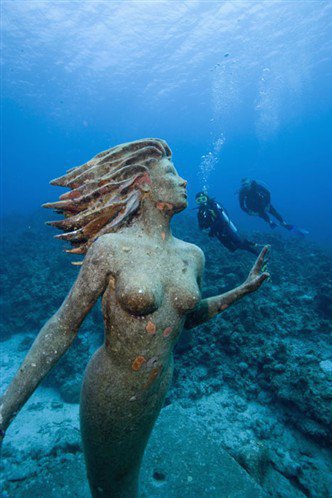 Le site nationaliste Breiz Atao a mis en ligne en août 2014 un texte titré « Alexandre Douguine ou la subversion de la Russie orthodoxe », très violemment opposé au penseur de l’eurasisme. Le texte cite un entretien de Douguine de 2002 donné au journal russe Kommersant-Vlast : « La Russie est seulement sauvée par le fait que nous ne sommes pas de purs Blancs. Les corporations multinationales prédatrices, oppressantes et détruisant tous les autres, sans parler de MTV, des gays et des lesbiennes – c’est le fruit de la civilisation blanche, dont il est nécessaire de se débarrasser. Donc je suis pour les rouges, les jaunes, les verts, les noirs, mais pas pour les blancs. » On imagine ce que ce trait d’humour peut provoquer chez des racialistes un peu crispés.
Le site nationaliste Breiz Atao a mis en ligne en août 2014 un texte titré « Alexandre Douguine ou la subversion de la Russie orthodoxe », très violemment opposé au penseur de l’eurasisme. Le texte cite un entretien de Douguine de 2002 donné au journal russe Kommersant-Vlast : « La Russie est seulement sauvée par le fait que nous ne sommes pas de purs Blancs. Les corporations multinationales prédatrices, oppressantes et détruisant tous les autres, sans parler de MTV, des gays et des lesbiennes – c’est le fruit de la civilisation blanche, dont il est nécessaire de se débarrasser. Donc je suis pour les rouges, les jaunes, les verts, les noirs, mais pas pour les blancs. » On imagine ce que ce trait d’humour peut provoquer chez des racialistes un peu crispés.
Le même article reproche à Douguine le fait d’estimer que la Russie ne soit pas un pays européen, contrairement à Poutine qui a déclaré “Les valeurs russes ne diffèrent pas des valeurs européennes”. Or, les principes premiers de l’eurasisme excluent d’autorité toute valeur commune entre l’Europe et la Russie, puisque les principes premiers de l’eurasisme relèvent de la spiritualité, et que l’Europe est (ou devrait être) catholique et protestante (malheureusement) et la Russie est orthodoxe. On peut travailler au rapprochement entre le catholicisme et l’orthodoxie, et c’est même la plus grande tâche à accomplir aujourd’hui, mais la Russie et l’Europe ne peuvent pas être confondues ni mises sur le même plan.
Rappelons que l’eurasisme politique, dont les bases intellectuelles se trouvent dans le concept de multipolarité civilisationnelle, promeut le rejet de toute norme internationale dans quelque domaine que ce soit et la promotion de la coexistence des civilisations au niveau mondial.
Je vais dire à nouveau ce que j’ai dit à Bruxelles en octobre dernier, parce que l’eurasisme politique est quelque chose d’absolument fondamental, et qu’il n’est pas vain ni inutile de rappeler ce paragraphe qui est en opposition frontale avec tous les schémas de pensée nationaliste, que l’on trouve notamment dans la fameuse dissidence française nationalisto-marxisto-complotiste.
Les civilisations sont les pôles du monde multipolaire, et leur définition repose sur le substrat de ce qu’est une civilisation au sens traditionnel, c’est-à-dire sa spiritualité ; ces civilisations sont (je cite Douguine dans son ouvrage "Pour une théorie du monde multipolaire") : la civilisation orthodoxe (« Son guide est l’union eurasienne, dont les étapes sont l’intensification de la coopération militaro-stratégique au sein de l’Organisation du Traité de Sécurité Collective, le partenariat économique au sein de la Communauté économique eurasienne, l’Union entre la Biélorussie et la Russie, le projet de l’espace économique commun, incluant l’Ukraine en partie, ainsi que les structures de la CEI ») ; la civilisation islamique (« recouvrant la Conférence islamique, la Banque islamique de développement, l’espace chiite commun incluant l’Iran, l’Irak et le Liban, ainsi que les projets fondamentalistes du nouveau califat »)
ce point est particulièrement important, dans la mesure où la dissidence nationalisto-marxisto-complotiste voit systématiquement derrière tout mouvement "islamiste radical" un complot américano-sioniste. Ces conceptions se retrouvent également dans son ouvrage "La Quatrième Théorie Politique". Voir, notamment, son chapitre "L'empire islamique (le califat mondial)" où il écrit clairement : "Le fait que les islamistes radicaux aient désigné les Etats-Unis comme leur principal ennemi constitue une preuve suffisante du fait que nous avons affaire à un projet sérieux et responsable". Bien sûr, le terme de califat utilisé par Douguine n’a rien à voir avec l’actualité, ses ouvrages étant antérieurs à 2013. Ce qui compte véritablement, c’est que puisse surgir «un Etat musulman supranational qui serait parvenu à unifier et restructurer le monde musulman» (je cite Soleiman Al-Kaabi, spécialiste de la temporalité coranique, et qui nous fait l’honneur d’être présent dans cette salle).
; la civilisation hindoue (« renforcement de l’influence indienne en Asie du Sud, sur le sous-continent indien, au Népal et dans certains pays du bassin du Pacifique, proches de l’Inde géopolitiquement et culturellement ») ; la civilisation chinoise (confucianiste) incluant la Chine, Taiwan, l’émergence de la zone du yuan or ; la civilisation japonaise ; la civilisation catholique (Europe d’un côté et Amérique latine de l’autre) ; la civilisation bouddhiste (Asie du sud-est) et la civilisation africaine (« Organisation de l’unité africaine, les Etats-Unis d’Afrique »).
Je répète, donc, ce que j’ai dit en octobre dernier à Bruxelles : Comprendre l’Empire Eurasien, c’est favoriser la gouvernance globale civilisationnelle contre la révolte des nations bourgeoises. La révolte des nations bourgeoises, comme par exemple la révolte de l’Ukraine atlantiste et occidentale contre l’Empire civilisationnel russe, contre la Novorossiya et ses hommes encadrés par Igor Strelkov, tous prêts à donner leur vie pour Jésus-Christ. Alors qu’en face, chez Svoboda ou le bataillon Azov, on se bat pour l’Ukraine indépendante.
« On comprend dès lors que Douguine ne souscrive absolument pas au principe de vérité révélée seule détenue par l’Eglise, orthodoxe ou catholique, et qu’en conséquence son approche géopolitique consiste à défendre un strict cosmopolitisme spirituel. Acquis à l’idée gnostique que la connaissance éclaire l’homme et le sauve et que la vérité est partout, pour qui sait la voir, Douguine veut donc dresser l’ensemble des civilisations non-occidentales, contre l’Ouest démocratique paradoxalement né dans les mêmes cercles.
Cette approche hérétique du point de vue orthodoxe comme catholique sert pourtant de base idéologique à l’intellectuel “eurasiste” afin de se faire passer comme le tenant d’une Russie orthodoxe intransigeante.
Ce confusionnisme spirituel, il le partage avec celui qui est de mise aux USA où les sectes et groupes religieux de toute nature sont particulièrement puissants, de l’Eglise de Scientologie à la maçonnerie, en passant par les églises évangélistes, les organisations musulmanes ou bouddhistes. »
Une confusion maximale est encore atteinte ici entre l’atlantisme et la Tradition héritée de l’Alantide. La proposition de Douguine en matière de religion consiste à éviter toute notion de conversion ou de mission religieuse : les conceptions politiques de la multipolarité s’étendent à la sphère spirituelle. C’est-à-dire que l’on condamne toute propagande religieuse. Par exemple, il est normal qu’un orthodoxe prétende que sa religion possède un caractère universel, et que tout le monde devrait être orthodoxe. Mais le principe de la multipolarité veut qu’il s’occupe d’abord de sa propre civilisation orthodoxe, qu’il la bâtisse correctement afin qu’elle soit belle, juste et cohérente. S’il convainc d’autres personnes de devenir orthodoxe, ce sera grâce à la perfection de l’exemple qu’il pourra donner. L’eurasisme est radicalement anti-colonialiste sur tous les plans, y compris – et peut-être même surtout – sur le plan religieux. Le traditionalisme pratiqué par Douguine sert surtout à comprendre que, si chaque religion est la seule valable pour la personne qui la pratique, le fait que toutes les religions justifiées procèdent d’une même substance permet de ne pas voir le croyant d’une autre religion comme un ennemi mais comme un allié face à l’athéisme marchand. Chacun sait qu’il a raison dans son for intérieur de posséder sa propre foi, mais chacun sait également qu’il a raison de ne pas vouloir convaincre l’autre par tous les moyens d’abandonner sa foi pour rejoindre la sienne. C’est justement cela, la multipolarité, et c’est la meilleure politique possible au XXIIè siècle. Et cela n’a strictement rien à voir avec ce « cosmopolitisme spirituel » dont parle le site Breiz Tao. Toujours cette confusion entre atlantisme et Atlantide. Par ailleurs, j’ai bien parlé de religions justifiées, telle que celles citées précédemment : orthodoxie, islam, hindouisme, confucianisme, shinto, catholicisme et bouddhisme. Les spiritualités modernes (Scientologie, maçonnerie ou Témoins de Jéhovah) n’ont pas leur place dans un monde eurasiste. Il n’y a aucune tolérance ni aucun confusionnisme spirituel dans les principes eurasistes.

J’ai assisté il y a peu à une conférence de Mgr Williamson à Marseille. Il affirme que, lorsque l’on discute avec un orthodoxe comme M. Poutine par exemple, le but premier de la conversation est de pouvoir amener par tous les moyens son interlocuteur au catholicisme. Je pense, personnellement, qu’il y a d’autres urgences que de vouloir convertir à tout prix les masses russes à la foi catholique, et que, par ailleurs, il n’est pas tout à fait certain que l’on puisse y parvenir aussi facilement que cela.
Dans la perspective eurasiste, ce sont donc les alliances de civilisations, et conséquemment des spiritualités authentiques, qui renverseront la matrice du non-Etre. En tant que construction bourgeoise élaborée par la classe marchande pour élargir ses intérêts socio-économiques, la nation est la première ennemie du monde traditionnel, surtout dans notre patrie où, comme je l’ai déjà expliqué dans d’autres conférences, la France s’est construite de manière particulièrement visible contre la Gaule au bénéfice intégral de ses fausses élites, à tel point que la centralisation française et la destruction concomitante de nos terres enchantées sont devenues le modèle structurel et archétypal de l’occidentalisation du monde.
Pour des raisons historiques liées à leur anti-atlantisme originel, la plupart des mouvements nationalistes en Europe faisaient partie des dernières forces politiques à n’avoir pas succombé aux sirènes états-uniennes. Mais cette époque est bel et bien terminée, et la guerre du Donbass les a presque tous fait tomber dans le piège.
Je pense notamment à Zentropa ou Casapound. Je sais bien qu’il existe de nombreux courants de pensée en interne vis-à-vis de ces questions-là, mais enfin, il est quand même évident qu’ils relaient essentiellement des messages anti-NovoRossiya.
Ceux qui écoutent de la musique industrielle ou neofolk (ou autres) le savent aussi bien que moi : presque tous ces groupes musicaux sont passés du côté de Svoboda. Je pense notamment à la dernière série de concerts de Death In June, cette année en France, et à leur nouvelle version de « Liberté c’est un rêve ». Après l’incantation « Où est Klaus Barbie », Douglas Pearce rajoute « Où est Ben Laden, où est Poutine ? ». Ils appellent même ça le « Bin Putin mix ». Ce qui signifie bien, par ailleurs, qu’il n’y a jamais eu aucune ambiguïté depuis le début avec ce titre, Barbie étant considéré comme un méchant absolu au même titre que Ben Laden et Poutine, exactement comme le pense n’importe quel journaliste du Nouvel Observateur. Le groupe a également joué à Kiev, à Odessa, même à Marioupol, sur la mer d’Azov, « en hommage à leurs frères d’armes » ont-ils proclamé. De manière plus anecdotique, mais tout aussi révélatrice, un type comme Claus Larsen (de Leatherstrip) qui nous soulevait d’enthousiasme en 1992 avec son titre « Anti US », chante aujourd’hui « The evil in Putin’s Eyes ».
En réalité, ce n’est pas la première fois que les nationalistes tombent dans ce type de piège tendu par l’atlantisme.
J’ai relu cet été « Les Décombres » de Lucien Rebatet. J’ai été frappé par de nombreuses analogies avec notre époque. La volonté de guerre de l’Occident face à l’invasion des Sudètes par Hitler (en septembre 1938) fait songer à la propagande belliciste face au rattachement de la Crimée par Poutine. 1938 : les allemands des Sudètes, minorité ethnico-linguistique en danger au sein d’un pays fictif comme la Tchécoslovaquie. 2015 : les Russes de Crimée et du Donbass, minorité ethnico-linguistique en danger au sein d’un pays fictif comme l’Ukraine. Et, à l’époque, comme aujourd’hui, les nationalistes qui poussent à la guerre aux côtés de l’Occident. Rebatet, lui, faisait partie du camp de la paix.
Lucien Rebatet « Les Décombres – Ch. III Pour l’amour des Tchèques » [partiel]
« A une volonté de guerre aussi extravagante et frénétique, il fallait certainement des ressorts considérables. A Je Suis Partout et à l’Action Française, on les avait décrits sans répit depuis des mois. Le clan de la guerre tchèque était le même qui avait livré Mayence, remis Strasbourg sous le feu des canons allemands, vomi l’insulte contre Dollfuss, reçu Schussnigg à Paris dans une gare de marchandises, traité en hors la loi Mussolini, le garde du Brenner. La sécurité territoriale, la suprématie et la prospérité de la France lui importaient fort peu. Encore moins l’Autriche. Il l’avait condamnée e 1919. Il avait sournoisement précipité sa fin en lâchant et vilipendant ses défenseurs.
Mais la Tchécoslovaquie était sa chose, sa création de choix. J’hésitais souvent devant les explications un peu grosses et populaires d’un événement politique. Mais cette fois, l’erreur eût été de subtiliser. Hitler eût pu exiger sans courir le moindre risque le retour de plusieurs millions d’autres Allemands dans le giron nazi. Il réclamait ses Sudètes, Allemands de la tête aux pieds, en vertu d’un droit des peuples codifié et contresigné par les démocrates eux-mêmes. Mais le droit genevois variait selon les hommes et l’heure autant que la liberté et la justice des républicains. Il n’y avait pas plus de droit des peuples pour les Sudètes que de droits de l’homme pour Maurras en prison.
Nos boutefeux eussent peut-être bien livré sans coup férir deux millions d’Alsaciens authentiques. Mais le dessein de Hitler portait atteinte à un fief élu de la grande maçonnerie. Il menaçait de forcer la porte d’une Loge illustre entre toutes les loges.
La construction tchécoslovaque était manifestement ridicule et branlante. Mais c’était justement la meilleure raison pour que les hommes de toutes les expériences idiotes, des faillites socialistes, des pactes lunaires, des finances de cirque, des avions contre Franco, des sanctions contre le Duce, des tendresses à Staline, des ambassades de Guignol, l’adoptassent comme leur rejeton amoureusement couvé. Il avait fallu un collage laborieux et des spoliations indignes pour donner consistance à cet Etat chimérique. Mais nos hommes le caressaient comme le chef-d’œuvre de leur traité. Sur leurs cartes, les Allemands le coloriaient du vermillon dévolu aux pays contaminés par le bolchevisme. C’était bien en effet sa nature et sa fonction : au cœur de l’Europe, un instrument choisi du despotisme marxiste, des intrigues, des capitaux, des vetos et des haines du Triangle et d’Israël. Hitler menaçait là quelque chose d’infiniment plus essentiel aux yeux de bien des gens que la plaine d’Alsace ou la vie d’un million de nos fantassins. M. Benès avait fait le grand signe de détresse. Il ne s’agissait plus d’une des mésaventures ministérielles qu’on résout avec quelques pelotons de gardes mobiles et deux ou trois assassinats. Le grand branle-bas de combat répondait à l’appel de Frère ».
Rebatet confortera ensuite dans Je suis Partout sa position pacifiste, fasciste et grand-continentale. Un an après, la même histoire recommençait avec la Pologne. Et la guerre totale s’enclencha…
L’hitlérisme était un eurasisme par bien des côtés, et la lecture de Drieu La Rochelle nous le confirme, lui qui disait que la seule chose qui le gênait au début dans le fascisme, c’était le nationalisme, et qu’il avait définitivement rejoint le fascisme après qu’il se soit débarrassé de cette erreur. La victoire concomitante du libéralisme et du communisme en 1945 ont plongé l’Europe, et même le monde, dans une nuit profonde. L’intensité de l’oppression démocratique, médiatique et financière augmente chaque jour en France depuis 70 ans, tant et si bien que l’on est aujourd’hui persuadé qu’il est impossible que la libération ne provienne de forces internes à notre pays. Revenons à l’hitlérisme : c’était bien sûr un eurasisme partiellement dévoyé, car non ancré dans une authentique spiritualité justifiée et bien établie. Jean Parvulesco en dresse un court bilan dans Un retour en Colchide, son dernier ouvrage – son dernier roman – publié en 2010. Vous allez voir qu’on est très loin du discours « dissident » actuel.
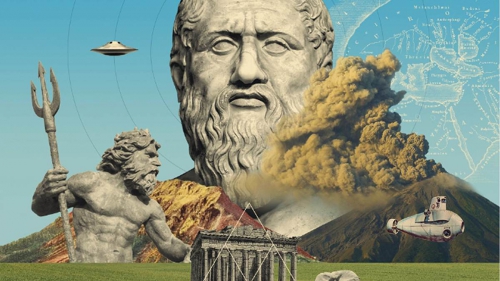
Jean Parvulesco « Un Retour en Colchide » [partiel]
« Si ce matin, au réveil, je ‘écrie Acqua Alta, c’est que je sens que nous entrons en des temps de très hautes marées. Des puissances immenses, tout à fait insoupçonnées jusqu’à présent, s’apprêtent à être de retour en force ; des choses se passeront que nous n’avions jamais encore vues, et cela d’un instant à l’autre. D’autre part il est certain que, malgré l’état authentiquement révolutionnaire de ses débuts, le Troisième Reich hitlérien a dû assumer, jusqu’à la fin et même au-delà, quatre grandes erreurs fondamentales, erreurs qu’il a dû payer de sa totale destitution politico-historique, de son évacuation irrévocable de la réalité de ce monde, comme s’il n’avait jamais existé. Ces quatre erreurs sont les suivantes – c’est le moment de les rappeler.
(1) L’inconcevable imbécillité criminelle de la Shoah, de la conception et de la mise en œuvre dans les conditions que maintenant l’on sait du projet visant l’anéantissement du peuple juif dans toutes ses dispersions européennes ».
Afin de couper court aux critiques qui pourraient immédiatement fuser de la part des milieux « dissidents » actuels, je précise que Parvulesco n’écrivait pas ceci dans le but de passer à la télévision, d’entrer à l’Académie française ou d’avoir son siège au comité directeur du Groupe Bilderberg : il avait 81 ans, était rongé par la maladie et ne pouvait plus sortir de son lit. Mais Parvulesco, en tant qu’authentique ésotériste traditionaliste, a toujours proclamé sa passion pour la véritable mystique juive et pour la Kabbale (tout comme Guénon, d’ailleurs, je le signale aux guénolâtres antisémites qui courent un peu partout).
Je reprends.
« (2) Le mépris paranoïaque de toutes les nations slaves, et de la Russie en premier lieu, dans la perspective finale d’une vaste entreprise de colonisation des espaces continentaux de l’Est européen ».
On peut d’ailleurs penser que l’antisémitisme hitlérien n’était rien d’autre qu’un sous-produit de son anti-slavisme irréductible.
« (3) L’hostilité à l’égard de l’Eglise catholique, dont la partie la plus ardente eût dû constituer le substrat eucharistique de la grande révolution continentale européenne que menait le IIIè Reich.
(4) Ne pas avoir su reconnaître et encore moins utiliser, sur son front de combat intérieur, des penseurs de la taille d’un Martin Heidegger, ou de Karl Haushofer, ce dernier idéologue du rapprochement continental germano-russe, et avoir préféré à leur place les services d’un crétin subalterne comme Alfred Rosenberg et tous les débiles de la même classe d’indigence mentale (exception faite, peut-être, pour les niveaux supérieurs, ‘ultimes’, de certaines hiérarchies intérieures secrètes de la SS).
Derrière ces terribles erreurs – derrière ces malédictions indélébiles – il y eut cependant une partie incomparable de grandeur réalisée, de surpuissance visionnaire et d’engagement irrationnel, abyssal, d’exploitation symbolique, révolutionnaire, de l’histoire européenne en marche, une part qui ne lui sera jamais enlevée ».
Pierre-Antoine Cousteau, dans son Dialogue des Vaincus avec Rebatet, publié en 1950, lâche cette stupéfiante prophétie : « L ’Amérique a mis le doigt dans un drôle d’engrenage. Ca se terminera peut-être très bien, par l’établissement sur cette planète d’une sorte de pax americana, à base de Coca-Cola, de bulletins de vote et de télévision. Ou ça se terminera très mal par un étripage général et des effondrements de gratte-ciel ».
4) Marxisme
Les marxistes considèrent que le conflit entre Russie et Occident est une dispute intra-capitaliste, un combat entre deux entreprises multinationales, une lutte économique entre deux entités atlantistes. C’est assez similaire au discours des complotistes « catholiques » comme Pierre Hillard, qui considèrent que le conflit ukrainien n’est qu’une guerre entre deux sectes juives. On retrouve aussi ce discours chez des ésotéristes anti-chrétiens obsessionnellement anti-eurasistes, qui voient dans tout ceci un combat obscur entre deux forces concurrentes de la contre-initiation, Poutine étant issu du KGB et donc de la contre-initiation absolue, évidemment.
En fait, personne n’a avalé la désoviétisation de la Russie, effectuée entre autres sous l’impulsion de Jean-Paul II. Il est vrai que ce dernier a pu mener cette opération avec, en partie, le financement de Ronald Reagan. Mais Jean-Paul II l’a fait au nom de la Vierge Marie.
Les premiers à regretter la désoviétisation de la Russie sont les marxistes, bien sûr. Certains d’entre eux regrettent que la Russie n’en ait pas profité pour adopter le « véritable communisme » au lieu de se jeter la gueule ouverte dans le Christ ou Mahomet. Dès qu’ils en ont eu la possibilité, les 150 millions de Russes ont choisi de se jeter à corps perdu dans la foi vivante de leur religion retrouvée. Les 120 millions d’orthodoxes ont renoué avec le Christ dont ils avaient soif depuis plus de soixante ans, les 20 millions de musulmans ont retrouvé le chemin de leur mosquée, et les autres ont pu ré-embrasser Bouddha, la Torah ou la main de leur chamane.
Il n’y a pas que l’économie dans la vie. Pratiquer la religion ardente de ses ancêtres, avec les valeurs qui l’accompagnent, c’est aussi une façon de résister à l’Occident.
La structure économique russe est aujourd’hui faite de capitalisme et de corruption, parce que le caractère totalitaire du capitalisme financier est d’une puissance phénoménale. Mais, contrairement à l’Europe de l’ouest qui a choisi en 1945 de se faire coloniser par l’Amérique, le peuple russe a choisi au début des années 2000 des valeurs fondamentalement anti-occidentales, toutes basées sur l’orthodoxie ou bien l’islam.
Contrairement à ce que tentent de nous faire croire les nationalistes engagés du côté de Kiev, tous les partis communistes européens sont aujourd’hui délibérément anti-russes. Et le PCF en tout premier lieu.
Exemple n°1, communiqué du 27 novembre 2014. "Le régime de Poutine continue l’œuvre de la restauration capitaliste en ex-URSS, la liquidation des acquis sociaux, de pans entiers de l’appareil de production, l’accaparement des richesses par quelques oligarques. Il s’appuie sur les forces les plus réactionnaires, religieuses, nationalistes, souvent racistes. Il ne tolère les organisations syndicales et politiques, y compris celles dénommées « communistes », que lorsqu’elles lui restent docilement soumises. Le régime est répressif, policier, militariste."
Exemple n°2 : communiqué du 20 août 2012, relayé par « L’Humanité ».
« A Moscou, la condamnation à 2 ans d'incarcération des Pussy Riot suscite de multiples protestations dans le monde au nom de la liberté d'expression et pour la défense d'une jeunesse russe qui supporte de moins en moins un système Poutine fermé et répressif.
Le Parti communiste français condamne ce qui apparait comme un procès politique qui a du mal à se cacher derrière les accusations de "blasphème" et "d'incitation à la haine religieuse". Il exprime sa consternation devant une peine aussi lourde dont la vocation manifeste est de chercher à freiner un mouvement de protestation populaire et d'aspirations démocratiques qui grandit en Russie.
Ce qui aurait pu rester comme une exhibition contestataire et insolente est devenu une affaire nationale qui pose la question des principes et des pratiques d'un Etat de droit, du respect des libertés et des conditions de la laicité et de la démocratie en Russie.
Signé : Parti communiste français »
Exemple n°3. Communiqué du 1 mars 2015 : Le Parti communiste français a jugé ce dimanche 1er mars que l'assassinat de l'opposant russe Boris Nemtsov à Moscou avait un "mobile politique évident". Il "condamne avec la plus grande fermeté l'assassinat de Boris Nemtsov et souhaite que l'enquête puisse aboutir dans les plus brefs délais sur l'arrestation des responsables de ce crime, des hommes de main jusqu'aux donneurs d'ordre, et sur des poursuites judiciaires". "C'est un dû à l'ensemble de la société russe qui souffre déjà trop de carences et dénis démocratiques", ajoute le parti dirigé par le sénateur Pierre Laurent.
Etc., etc.
Il n’y a aucun « rangement délibéré et permanent du PCF derrière l’empire des terres », comme on veut parfois nous le faire croire.
Etre marxiste, c’est considérer qu’une Russie soviétique vaut toujours mieux qu’une Russie orthodoxe, quelle que soit la réalité du soviétisme vécu.
Etre catholique, c’est considérer qu’une Russie redevenue orthodoxe grâce à l’action de Jean-Paul II est un miracle historique qui devrait être célébré chaque jour avec joie. Bien que polonais, il est notoire que Jean-Paul II aimait la Russie : il avait lu Vladimir Soloviev et Nicolas Berdiaev, ce même Berdiaev qui avait écrit : « La culture occidentale est une culture de progrès. Le peuple russe, quant à lui, est le peuple de la fin ». La doctrine de la « toute-unité » de Soloviev, concernant la question de l’unité chrétienne, était : unité maximale dans la multiplicité maximale. En l’an 2000, pour le centenaire de la mort de Soloviev, Jean-Paul II avait déclaré : « En faisant mémoire de cette personnalité russe d’une profondeur extraordinaire, qui avait très bien perçu le drame de la division des chrétiens et le besoin urgent d’unité, je voudrais inviter le monde à prier pour que les chrétiens d’Orient et d’Occident [de Russie et d’Europe] retrouvent au plus vite la pleine communion ».

Etre catholique, c’est étudier la pneumatologie orthodoxe, avec Saint Grégoire Palamas par exemple, ce saint du XIVè siècle né à Constantinople, qui fit son éducation monastique au Mont Athos, et qui recommanda la méthode d’oraison hésychaste (purification de l’intelligence et maîtrise du souffle) comme expérience directe avec Dieu. Saint Grégoire Palamas a passé sa vie à développer cette idée fondamentale : « Dieu s'est fait homme, pour que l'homme devienne Dieu ».
Etre catholique, c’est appeler à une unité retrouvée entre catholicisme et orthodoxie. Non pas dans un sens œcuménique, comme le dira l’orthodoxe Constantin Parvulesco tout à l’heure, c’est-à-dire que le but n’est pas de convertir les orthodoxes au catholicisme. Le but, comme l’écrivait Jean Parvulesco le catholique, c’est de parvenir à trouver le secret de la suprême jonction entre l’orthodoxie et le catholicisme, et ce secret réside dans le dogme du couronnement de la Vierge Marie associé à l’amour intransigeant du Paraclet.
Jean Parvulesco parlait de « l’immense bataille théologique et métahistorique en train de constituer actuellement les fondements du renouveau révolutionnaire grand-continental européen du troisième millénaire, qui verra la nativité dogmatique d’une nouvelle religion impériale grand-continentale axée sur la figure de Marie couronnée, de Marie souveraine maîtresse des cieux et de la terre ».
Etre catholique, c’est vénérer la Royauté Absolue et Cosmique de la Sainte Vierge, comme dans les visions de Joachim de Flore, comme la décrit saint Jean au chapitre XII de son Apocalypse.
Après deux millénaires de représentations picturales et sculpturales du Couronnement de la Vierge, de très nombreux courants chrétiens demandent aujourd’hui la reconnaissance dogmatique de la titulature de la Vierge comme co-médiatrice, co-rédemptrice, Mère de l’Eglise, Reine du monde… Comme l’écrit le Père Zanotti-Sorkine : « En reconnaissant que Marie a sauvé le monde avec son fils, l’église permettrait à sa royauté d’apparaître sous un jour unique, jamais atteinte par aucune tête couronnée de la terre. »
Enfin, être catholique, c’est être définitivement anti-marxiste, anti-démocrate, et anti-républicain.
5) Complotisme
Au début de mon exposé, je rappelais que l’écriture est supposée être née vers – 3500, durant l’ère précessionnelle du Taureau, la première ère de l’Age de Fer qui débuta par le déluge de Noé.
Et le déluge de Noé, c’est justement l’éradication de toutes les colonies atlantes, à l’exception – comme je le disais tout à l’heure – de la Chaldée (Japhet), de l’Egypte (Cham) et des juifs faisant la jonction historique entre les deux (Sem).
J’aimerais insister sur le lien structurel et signifiant entre l’écriture et son support, et également entre la lecture et son support.
Contrairement à ce que proclament les évolutionnistes, toute irruption dans l’histoire d’une nouvelle technologie est un signe direct de l’affaiblissement des connaissances humaines. Plus l’homme est intelligent, et moins il connaît. Et c’est même parce qu’il connaît de moins en moins, du fait de l’éloignement progressif et historique des origines de sa création, que son intelligence analytique se complexifie afin de pouvoir reproduire des phénomènes qu’il savait contrôler auparavant par d’autres moyens que technologiques : des moyens cognitifs et spirituels. L’invention de la roue - et de la charrette – ne prouve rien d’autre le fait que l’homme était alors devenu suffisamment moderne pour ne plus savoir se déplacer autrement que par des moyens matériels.
L’écriture est née en même temps que la roue, et au même endroit : en Mésopotamie vers 3600 avant Jésus-Christ. La première écriture montre le besoin de fixer des connaissances sous forme de traits gravés dans l’argile, c’est l’écriture cunéiforme. Puis, quelques centaines d’années plus tard, on trouve les premiers hiéroglyphes en Egypte sur la palette de Narmer. Comme je le disais tout à l’heure, on trouve la présence des trois fils de Noé : deux sont sédentaires, Japhet et Cham, et le troisième, Sem, est nomade. Dans la cité de Japhet (la Chaldée), Sem s’appelle Abraham avant de se rendre dans la cité de Cham (l’Egypte), où il s’appellera Moïse. La vision philosémite des événements consiste à dire que les Juifs récupèrent à chaque fois l’écriture, c’est-à-dire les traces visibles de la religion – d’abord Gilgamesh puis Amon – afin de sauver l’essentiel de chaque civilisation avant qu’elle ne s’écroule. L’Arche d’Alliance pourrait alors être le cœur non-écrit de l’écrit, le centre vide du rouleau, la part interne et non divulgable réservée à la caste sacerdotale La vision antisémite consiste, au contraire, à dire que ce sont les Juifs qui provoquent à chaque fois l’écroulement de la civilisation, d’abord chaldéenne puis égyptienne, afin de pouvoir lui dérober son trésor spirituel. Ce n’est pas mon sujet.
Je veux insister sur le fait qu’avec l’écriture se révèle désormais à tout homme une partie des principes spirituels, alors que toutes les religions pratiquées depuis l’expulsion du Paradis étaient jusqu’alors basées sur des principes transmis de manière exclusivement orale et réservés à la connaissance des hommes en mesure de les comprendre.
L’invention de l’écriture correspond ainsi à une divulgation partielle des principes. C’est ce qui fait dire à un ami que Moïse, avec ses Tables de la Loi, a été le premier démocrate de l’histoire. Les grandes étapes de l’écriture ont ensuite été les suivantes : l’imprimerie, seconde moitié du XVè siècle (si l’on met de côté la xylographie pratiquée en Asie depuis 700 ans) ; les lettres sont désormais isolées les unes des autres, ce qui segmente la phrase. C’est à cette époque que surgissent à la fois l’humanisme et le protestantisme, deux pensées modernes et hérétiques qui se basent sur une version lettriste du monde, c’est-à-dire qui analysent les choses au pied de la lettre. Notons qu’en même temps, et comme par un effet de contre-réaction, on trouve Rabelais, Marsile Ficin, tous ces écrivains qui tentent d’utiliser la nouvelle technologie en la contournant, afin de retourner le plus efficacement possible aux sources du savoir.
Pour François Rabelais, et c'est indiqué très nettement dans le Pantagruel, Platon est le prince des philosophes. Il y fait beaucoup référence dans ses cinq livres.
Il est souvent représenté, à tort, comme un humaniste.
Mais Rabelais était un excellent catholique, il voulait revenir aux sources de sa religion. Il disait qu'il fallait parler la langue arabe pour lire le Coran, ainsi que maîtriser l'hébreu et le grec. Rabelais nous parle de la Sibylle de Cumes qui annonça la venue du Christ et nous rappelle par là les origines helléniques (et donc égyptiennes), et non pas seulement juives, du christianisme. Il évoque la cyclologie, il situe la "création du monde" (entrée dans l'âge de fer) quatre mille ans avant Jésus Christ. Rabelais insiste sur la double origine du judaïsme, par l'analogie des épouses d'Abraham, l'une chaldéenne et l'autre égyptienne. Rabelais insiste également sur le rôle apocalyptique de la Vierge Marie. En bref, ce corpus est celui d'une pensée traditionaliste en totale opposition avec la pensée humaniste des lumières, de la naissance de la modernité.
Par ailleurs, ce n’est certainement pas un hasard si l’invention de l’imprimerie en Europe correspond à la création, pour la première fois, de sociétés ésotériques profanes, laïques, telle que la Société Angélique à Lyon.
La rupture technologique suivante dans l’histoire de l’écriture, après l’imprimerie, est l’ordinateur. Après que la phrase ait été fragmentée par le système de l’imprimerie, c’est la lettre elle-même qui se fragmente sous l’effet de la pixellisation numérique. Comme l’avait très bien vu Abellio dans son roman La Fosse de Babel publié en 1962.
Au chapitre VI, le policier Pirenne exhibe sa gigantesque machine automatique de gestion d’informations sur les individus : c’est une « trieuse d’âmes ». « Vous êtes ici en présence du premier chef-d’œuvre de la police quantitative », explique Pirenne. « On raconte l’histoire de ce fantassin de l’armée Vlassov qui, étant ivre, en juin 44, à Sotteville, près de Rouen, coupa le doigt d’une jeune fille pour lui voler sa bague. On le retrouva en trois jours, à Strasbourg, un an et demi après, en sachant seulement qu’il était blond, mesurait environ 1 m 80 et avait une fossette au menton… Un jour, chaque homme aura sa fiche et on pourra, en un point quelconque du monde, à des milliers de kilomètres de chez lui, remonter instantanément dans son passé. Il n’y aura plus de distance et plus de passé ».
Raymond Abellio prophétise en ce roman en 62 le règne totalitaire de l’ordinateur qui abolit le temps et l’espace.
On retrouve ainsi une parfaite similarité entre l’évolution de l’écriture et les phases principales de la modernité chez l’homme décrites par Guénon : la lettre et l’être connaissent la même régression spirituelle : d’abord la coupure du lien transcendantal (invention de l’écriture), puis la coupure des liens horizontaux et la naissance de l’individualisme (isolement des lettres par l’imprimerie), et enfin la dissolution de l’être (pixellisation de la lettre). On ne lit pas un texte sur ordinateur, on le regarde, c’est tout à fait différent.
Enfin, voici la phase ultime. Avec internet, tous les ordinateurs du monde sont reliés les uns aux autres, et chaque pixel est instantanément délocalisé et mis en réseau. Le protestantisme est né avec l’isolement de la lettre ; le flicage généralisé des uns par les autres (la police parfaite) est né avec l’ordinateur ; avec la mise en réseau des pixels, est née la pensée en toile d’araignée : le complotisme.
Le versant religieux du complotisme se voit dans le succès grandissant du sédévacantisme, cette hérésie typiquement moderne où chacun prétend avec sa propre science infuse que le Vatican n’est plus le Vatican. Même Mgr Lefèvre n’a jamais été sédévacantiste ! On voit des traces de satanisme partout, sur le moindre cheveu du moindre curé de campagne.
Mais les ravages du complotisme en matière de politique sont tout aussi ahurissants.
On peut trouver sur internet une vidéo titrée « Incroyable : Poutine est juif et veut le nouvel ordre mondial ! », toujours relayée par les mêmes ahuris. En voici quelques commentaires.
7mn40 : On voit Poutine serrer la main du Pape François. « Tout le côté pseudo chrétien et anti-corruption de Poutine, c’est du théâtre ». Il est vrai que dans l’ombre des extra-terrestres, les illuminati à la tête du Vatican mettent la Cabale au sein de la prochaine société antéchristique…
9mn15 : « Il faut savoir que Poutine est juif, par sa mère qui s’appelle Maria Ivanovna Shalomova ». Il faut savoir que je suis moi-même juif, mon véritable nom est Laurent Jamesovitch, et je suis un ashkénaze infiltré dans les milieux eurasistes pour tout balancer aux flics. Je vous assure que c’est ce que l’on raconte dans certains milieux !
12mn50 : « Il faut savoir que Poutine a du sang sur les mains : Boris Nemtsov, Anna Politkovskaya ». La source ? Bloomberg News !
13mn42 : « Illuminati Puppets »
33mn : A propos de l’eurasisme : « Ca permet de brouiller les cartes des nations, et de faire croire que les nations, c’est dépassé ». Pour les complotistes, l’eurasisme est un mondialisme. Toujours cette confusion sempiternelle, ancrée – comme je l’ai montré – dans la confusion entre Atlantide et atlantisme.
34 mn : « Douguine, c’est un Brzezinsky russe »
« Ca me rappelle la deuxième guerre mondiale, où on avait d’un côté un camp inspiré par Marx (les russes), et de l’autre par Nietzsche (les allemands). A chaque fois, c’est des faux théoriciens qui viennent donner une idéologie pour permettre aux gouvernants d’être suivis par la foule ».
41mn30 : « Forcément, nos élites ne vont pas nous montrer le mauvais côté de la Russie, si c’est la Russie qui doit diriger le nouvel ordre mondial. C’est logique. Il faut forcément que le nouvel ordre mondial donne envie aux gens. Donc c’est pour ça que l’ancien ordre mondial, donc l’occident, qui se fait détruire parce qu’il est chrétien et que c’est l’ennemi des juifs, est déprécié. Donc en fait on montre une Russie complètement forte et largement supérieure à l’occident, parce que justement le but c’est d’écraser l’occident. Voilà, j’espère que vous avez compris la stratégie ». « Le but est l’instauration d’un nouvel ordre mondial communiste ».
Le complotisme est une pensée extrémiste fabriquée par internet pour lutter frontalement contre la pensée radicale.
Le complotisme est une force structurellement démotivante (puisque les Etats-Unis, les illuminati et les lézards contrôlent tout, y compris Douguine et le Vatican), mise en avant pour détruire de l’intérieur la révolution eurasiste.
Le complotisme est la maladie infantile de l’eurasisme.
Je termine avec le dernier paragraphe du texte de Douguine « La Terre verte – l’Amérique ».
« En premier lieu, les archétypes inconscients associés à la structure spatiale et temporelle du cosmos doivent être examinés à la lumière d’une tradition métaphysique véritable et orthodoxe, qui seule peut remettre les chose à leur juste place à l’intérieur de l’ordre divin. Au contraire, s’ils restent au niveau inconscient, ces archétypes, étant efficaces et puissants, pourront toujours attirer non seulement des individus particuliers, mais aussi des nations entières, des races et des civilisations vers les conséquences les plus imprévisibles et les plus destructrices. Mais pour atteindre la tradition métaphysique capable d’illuminer par le rayon de l’intelligence divine la profondeur abyssale du psychisme, il faut faire un effort intellectuel et spirituel presque incroyable dans les circonstances actuelles, afin de s’arracher aux ‘dogmes’ infondés de la pensée profane et matérialiste qui s’est emparée de la plupart de nos contemporains, mais sans pour cela tomber dans l’occultisme chaotique, le néo-mysticisme ou le néo-spiritualisme. La meilleure voie pour cela, et même la seule, est d’accepter une religion traditionnelle et, par la pratique spirituelle, rituelle et intellectuelle de cette religion, de pénétrer dans ses aspects ésotériques et secrets, dans ses mystères.
Deuxièmement, seules deux traditions religieuses sont moins exposées à l’influence de la ‘Terre verte’, à savoir le christianisme orthodoxe […] et l’islam orthodoxe. En tout cas, l’orientation verticale et métaphysique de ces religions, à conditions qu’elles soient épurées à la fois de toutes leurs stratifications modernes et de leurs associations archaïques, apparaît comme une garantie suffisante d’authenticité et d’efficacité spirituelle.
Et enfin, il est nécessaire de former un concept purement géopolitique et non-religieux de ‘bloc eurasien’ (‘Kontinentalblock’, comme on disait autrefois), qui unirait tous les peuples et tous les Etats eurasiens dans un seul complexe autonome et soustrait au paradigme parodique-eschatologique qui opprime le monde traditionnel. Aujourd’hui, après le démantèlement du système socialiste, il n’est pas vraiment important de savoir sous quelle forme politique et étatique cela surviendra. Au niveau mondial, il est maintenant beaucoup plus important qu’un seul peuple et qu’un seul Etat affrontent ‘l’Atlantide réémergeante’ et sa mission. C’est pourquoi l’idée d’une ‘Eurasie des peuples’ ou d’une ‘maison commune’ qui aurait une forte orientation anti-atlantique et qui ferait appel aux ressources intérieures, spirituelles, religieuses, économiques et matérielles, n’est aujourd’hui pas aussi abstraite et utopique qu’elle peut le sembler à première vue. La foi dans les ‘ancêtres morts’, dans les fabricants de coca-cola, est-elle plus réaliste et plus objective ?
Quant au continent Amérique, la période de son expansion, selon les correspondances cycliques précises, probablement, sera tendue, orageuse, pleine d’événements inquiétants, mais aussi extrêmement brève, puisque le ‘New Age’ dont l’arrivée a été annoncée par les partisans mystiques de la ‘Nouvelle Jérusalem’, mais qui n’a pas encore commencé, finira par arriver. Son arrivée sera signalée par un grand cataclysme géographique. Et qui sait si l’Amérique, la ‘Terre Verte’, ne connaîtra pas le même destin que celui qui frappa jadis un autre continent situé dans l’Atlantique ? »
Contre le triptyque Nationalisme, Marxisme et Complotisme :
Eurasiste, Catholique et Révolutionnaire !
Laurent James, Sainte-Foy-la-Grande, 5 septembre 2015




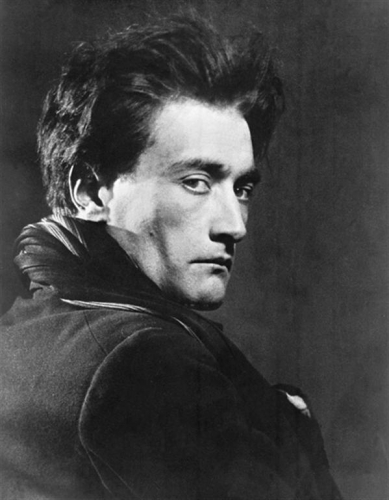

 del.icio.us
del.icio.us
 Digg
Digg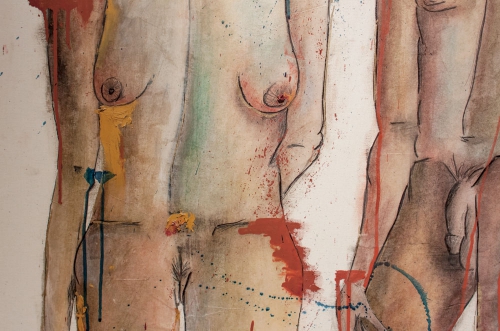
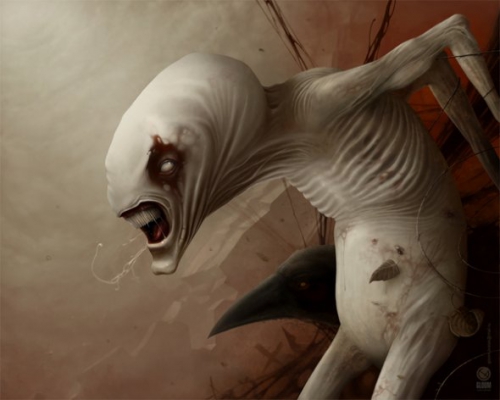
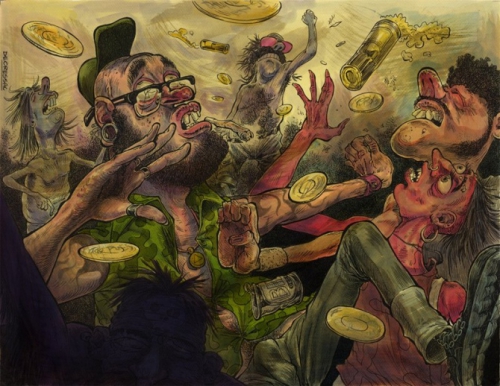
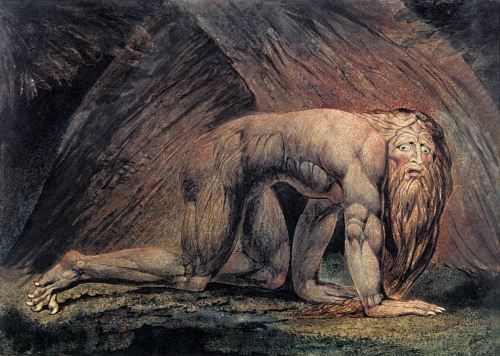

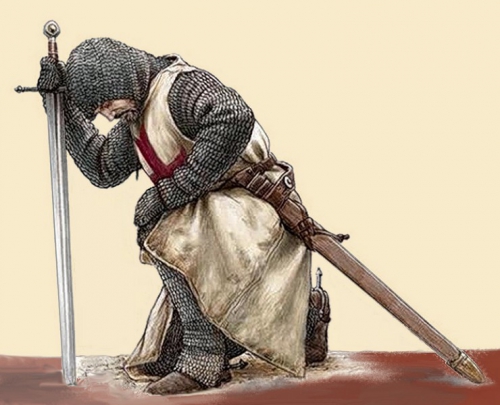

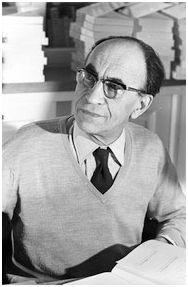 Dumont, nato a Salonicco nel 1911, si trasfersce successivamente in Francia, dove negli anni giovanili militerà nel Partito Comunista Francese, occupandosi delle varie sollecitazioni innovatrici della vivace realtà politica parigina. Presto si interessa di etnologia al punto di frequentare i corsi di Marcel Mauss al College de France, contro la volontà dei suoi genitori che lo avrebbero voluto ingegnere. Arruolato nell’esercito francese durante il secondo conflitto mondiale e finito prigioniero in un campo di detenzione tedesco, Dumont nel dopoguerra continua ad approfondire i suoi studi. Nel 1949 fa il suo primo viaggio in India, dove tornerà periodicamente per tutto il corso della sua vita. A partire dal confronto con l’India, comincia a sviluppare la dicotomia fondamentale tra l’Homo Aequalis, tipico dell’Occidente moderno, e l’Homo Hierarchicus. Proprio attorno a questa tematica, Dumont struttura alcuni dei suoi saggi più importanti e riconosciuti (si segnalano in particolare “La civiltà indiana e noi” del 1964 e “Homo Hierarchicus, saggio sul sistema delle caste” del 1966). Svincolando la sua analisi dal pregiudizio secondo il quale la società individualistica rappresenterebbe l’apice di un progresso (da leggere in contrapposizione alla barbarie di un sistema arcaico come quello delle caste), Dumont concentra la sua attenzione su uno dei testi più importanti della tradizione induista: il Sanathana Dharma.
Dumont, nato a Salonicco nel 1911, si trasfersce successivamente in Francia, dove negli anni giovanili militerà nel Partito Comunista Francese, occupandosi delle varie sollecitazioni innovatrici della vivace realtà politica parigina. Presto si interessa di etnologia al punto di frequentare i corsi di Marcel Mauss al College de France, contro la volontà dei suoi genitori che lo avrebbero voluto ingegnere. Arruolato nell’esercito francese durante il secondo conflitto mondiale e finito prigioniero in un campo di detenzione tedesco, Dumont nel dopoguerra continua ad approfondire i suoi studi. Nel 1949 fa il suo primo viaggio in India, dove tornerà periodicamente per tutto il corso della sua vita. A partire dal confronto con l’India, comincia a sviluppare la dicotomia fondamentale tra l’Homo Aequalis, tipico dell’Occidente moderno, e l’Homo Hierarchicus. Proprio attorno a questa tematica, Dumont struttura alcuni dei suoi saggi più importanti e riconosciuti (si segnalano in particolare “La civiltà indiana e noi” del 1964 e “Homo Hierarchicus, saggio sul sistema delle caste” del 1966). Svincolando la sua analisi dal pregiudizio secondo il quale la società individualistica rappresenterebbe l’apice di un progresso (da leggere in contrapposizione alla barbarie di un sistema arcaico come quello delle caste), Dumont concentra la sua attenzione su uno dei testi più importanti della tradizione induista: il Sanathana Dharma.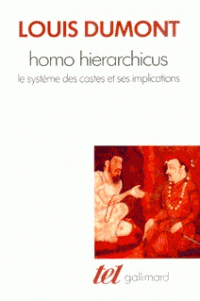 Si comprende bene come un tale individualismo si ponga agli antipodi con la concezione olistica/tradizionale: questo non vuol banalmente significare che in passato la totalità delle persone fosse altruista, ma che la comunità viveva coesa attorno a dei valori universalmente riconosciuti. Nell’induismo, per esempio, non esiste l’idea che per essere felici bisogna gratificare il proprio ego, ma vige, piuttosto, il pensiero per cui ognuno debba scoprire il ruolo assegnatogli dal destino e vivere in armonia con esso e ciò che si ha intorno: ciò che gratifica veramente l’esistenza della persona è insomma trovare il proprio posto all’interno della comunità, non emanciparsi da essa. L’individuo induista si concepisce infatti come parte del cosmo e non come un atomo portatore di valori naturali, privo di interdipendenza. Lo stesso asceta che si allontana dalla società non lo fa in nome di un ripiegamento individualista: si tratta piuttosto dell’aspirazione ad una realizzazione metafisico-cosmica superiore a quella basata su una vita comunitaria, ma in cui trionfa sempre lo stesso spirito olistico (non si mette in discussione il valore della comunità in quanto tale), distinto sia dall’individualismo extramondano sia da quello mondano.
Si comprende bene come un tale individualismo si ponga agli antipodi con la concezione olistica/tradizionale: questo non vuol banalmente significare che in passato la totalità delle persone fosse altruista, ma che la comunità viveva coesa attorno a dei valori universalmente riconosciuti. Nell’induismo, per esempio, non esiste l’idea che per essere felici bisogna gratificare il proprio ego, ma vige, piuttosto, il pensiero per cui ognuno debba scoprire il ruolo assegnatogli dal destino e vivere in armonia con esso e ciò che si ha intorno: ciò che gratifica veramente l’esistenza della persona è insomma trovare il proprio posto all’interno della comunità, non emanciparsi da essa. L’individuo induista si concepisce infatti come parte del cosmo e non come un atomo portatore di valori naturali, privo di interdipendenza. Lo stesso asceta che si allontana dalla società non lo fa in nome di un ripiegamento individualista: si tratta piuttosto dell’aspirazione ad una realizzazione metafisico-cosmica superiore a quella basata su una vita comunitaria, ma in cui trionfa sempre lo stesso spirito olistico (non si mette in discussione il valore della comunità in quanto tale), distinto sia dall’individualismo extramondano sia da quello mondano.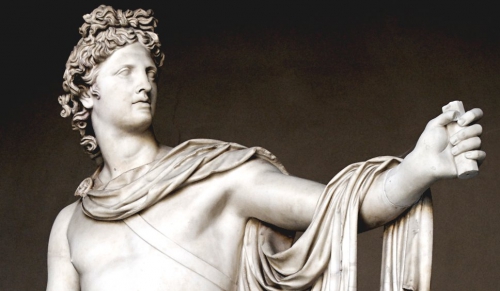

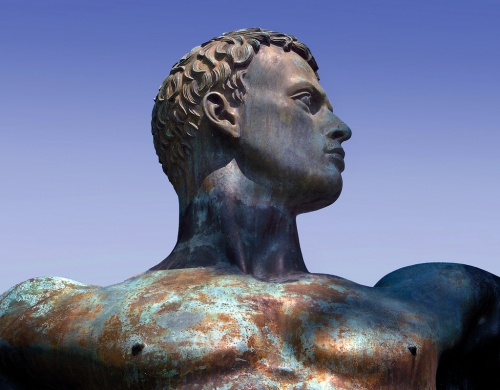
 Respectivement consacrés à Renzo de Felice et Giorgio Locchi, les chapitres 1 et 6 de la première partie posent les questions les plus fondamentales pour notre famille de pensée. Jusqu’où faire remonter la recherche de notre « moment zéro » (François Bousquet) ? Les étapes de la « tendance époquale » surhumaniste se succèdent-elles de manière continue ? Le fascisme lato sensu (dont le national-socialisme est provisoirement la forme la plus achevée) a-t-il été « prématuré (p. 142) », comme le laissent supposer certains passagers de Nietzsche prophétisant un interrègne nihiliste de deux siècles ?
Respectivement consacrés à Renzo de Felice et Giorgio Locchi, les chapitres 1 et 6 de la première partie posent les questions les plus fondamentales pour notre famille de pensée. Jusqu’où faire remonter la recherche de notre « moment zéro » (François Bousquet) ? Les étapes de la « tendance époquale » surhumaniste se succèdent-elles de manière continue ? Le fascisme lato sensu (dont le national-socialisme est provisoirement la forme la plus achevée) a-t-il été « prématuré (p. 142) », comme le laissent supposer certains passagers de Nietzsche prophétisant un interrègne nihiliste de deux siècles ?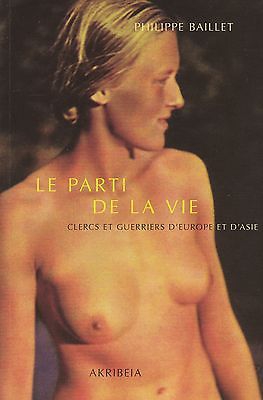
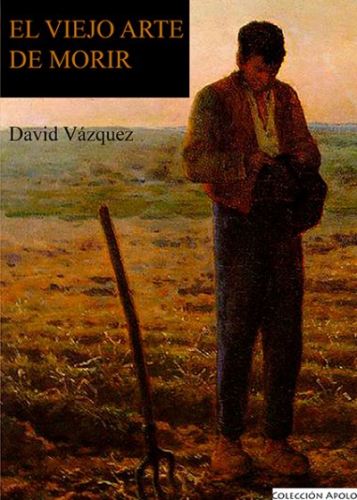

 To the Norse people the Bear was also a very powerful symbol very much attached to their beliefs and their warrior cults. People believed in many gods but there was always a group of people, a cult, dedicated to just one specific god, and in the Norse culture the warriors dedicated to Odin were called Berserkers, whose name comes from the word Bersark which means literally bearskin, which they wore for magical purposes and to honor the strength of the bear and become like him, fierce, strong, ferocious, violent in battle. These warriors would enter in an altered state of mind and call upon the spirit of the bear, becoming a bear themselves so they would not feel any pain during the battle, in order to keep the fight longer, roaring, putting fear upon their enemies. There are many accounts of this, of these warriors taking the amanita muscaria mushrooms, to enter in trance, and go completely crazy, becoming beasts ( this is from where and why the English word Berserker, or to go Berserker, came from ) wearing bear skins and nothing else, and sometimes even totally naked while going to battle and use their own hands and teeths to kill the enemies and tear off their armour and break their shields.
To the Norse people the Bear was also a very powerful symbol very much attached to their beliefs and their warrior cults. People believed in many gods but there was always a group of people, a cult, dedicated to just one specific god, and in the Norse culture the warriors dedicated to Odin were called Berserkers, whose name comes from the word Bersark which means literally bearskin, which they wore for magical purposes and to honor the strength of the bear and become like him, fierce, strong, ferocious, violent in battle. These warriors would enter in an altered state of mind and call upon the spirit of the bear, becoming a bear themselves so they would not feel any pain during the battle, in order to keep the fight longer, roaring, putting fear upon their enemies. There are many accounts of this, of these warriors taking the amanita muscaria mushrooms, to enter in trance, and go completely crazy, becoming beasts ( this is from where and why the English word Berserker, or to go Berserker, came from ) wearing bear skins and nothing else, and sometimes even totally naked while going to battle and use their own hands and teeths to kill the enemies and tear off their armour and break their shields.
 Thus, the concept – or rather, the ideology! – of so-called feminism is totally foreign to and incompatible with our own Eurasian morality. Moreover, the liberal roots of feminism are easy to uncover when one studies the topic for any small length of time. As an idea, feminism (like its liberal progenitor) is totally antithetical to the laws of Nature. For where exactly can it be seen in the animal kingdom that the female sex is equal to the male in terms of physical strength and sheer hardness? Perhaps a better question would be: where in all of Nature, and among all species, do you find female animals performing the same exact roles as their male counterparts? The answer: among human beings in the asinine Western World. That is, in the politically liberal, economically Capitalist, culturally degenerate, and American-controlled Western World.
Thus, the concept – or rather, the ideology! – of so-called feminism is totally foreign to and incompatible with our own Eurasian morality. Moreover, the liberal roots of feminism are easy to uncover when one studies the topic for any small length of time. As an idea, feminism (like its liberal progenitor) is totally antithetical to the laws of Nature. For where exactly can it be seen in the animal kingdom that the female sex is equal to the male in terms of physical strength and sheer hardness? Perhaps a better question would be: where in all of Nature, and among all species, do you find female animals performing the same exact roles as their male counterparts? The answer: among human beings in the asinine Western World. That is, in the politically liberal, economically Capitalist, culturally degenerate, and American-controlled Western World. 
 Comme vous le savez peut-être, une poignée de très sombres individus a réussi à faire capoter le projet cinq jours avant qu’il n’ait lieu. La version officielle réside dans la
Comme vous le savez peut-être, une poignée de très sombres individus a réussi à faire capoter le projet cinq jours avant qu’il n’ait lieu. La version officielle réside dans la 

 Le site nationaliste Breiz Atao a mis en ligne en août 2014 un texte titré « Alexandre Douguine ou la subversion de la Russie orthodoxe »,
Le site nationaliste Breiz Atao a mis en ligne en août 2014 un texte titré « Alexandre Douguine ou la subversion de la Russie orthodoxe »,




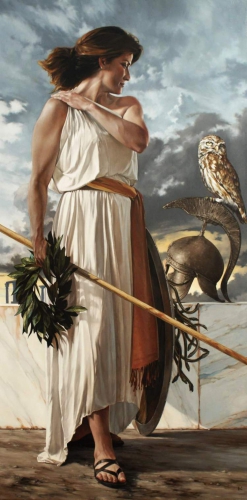 On pourrait, facilement, opposer l’idéal de la cité (le rayonnement des familles patriciennes) à celui de l’imperium (le nivellement des citoyens afin qu’ils deviennent des sujets consentants). Que s’est-il passé, en Occident, pour que l’idéal de la cité finisse par imploser sous la pression d’un imperium protéiforme et « multicartes »?
On pourrait, facilement, opposer l’idéal de la cité (le rayonnement des familles patriciennes) à celui de l’imperium (le nivellement des citoyens afin qu’ils deviennent des sujets consentants). Que s’est-il passé, en Occident, pour que l’idéal de la cité finisse par imploser sous la pression d’un imperium protéiforme et « multicartes »? 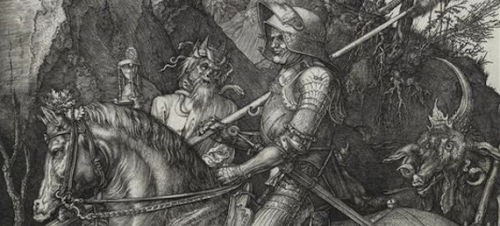
 È in Agostino e nei suoi dialoghi interiori con il suo Dio che nasce l’Io moderno come soggetto-singolo; Agostino dice per la prima volta: “Ego”, anticipando Cartesio e tutto il soggettivismo moderno. Pertanto effettuale all’assenza di qualsiasi personalismo o soggettivismo, in quanto non vi è, nel mondo indoeuropeo, alcuna presenza dell’Io, come si è accennato sopra, è l’inesistenza culturale della tematica “teismo-ateismo” che è processo dialettico paralizzante interno alla cultura astratta del monoteismo creazionistico e potenzialmente ateo, in quanto concepisce Dio come persona (personalizzazione del Divino) dotata di volontà e “progetto” creativo, d’ “amore” e di “compassione”, il tutto in una “umanizzazione” del Divino a cui, giustamente, W.F.Otto contrapponeva la elevazione greca ed indoeuropea dell’uomo verso il Divino e cioè la “divinizzazione” dell’umano (omòiosis theò). Nel mondo spirituale indoeuropeo in tanto non vi è dualismo religioso, in tanto il Divino è nel Mondo, in quanto esso (il Divino) non è nulla di personale, di “umano”, e quindi di “staccato” dal mondo; esso è, invece, il Principio del Mondo, il suo Arché ed è presente “in esso” impersonalmente poiché Potenza Divina nel Mondo medesimo; essendo (il Divino) il Mondo stesso però nella sua essenza: come Idea dell’Unità; in caso contrario non avrebbe avuto senso la sapienza ellenica che insegna (da Talete a Proclo…) che il mondo è ricolmo di Dei! L’assenza del concetto teistico di persona fa cadere nel nulla dell’inesistenza l’altro polo ad esso connesso: l’ateismo, il quale sorge inesorabilmente quando quella “persona” viene meno perché scompare la fede (secolarizzazione… modernità).
È in Agostino e nei suoi dialoghi interiori con il suo Dio che nasce l’Io moderno come soggetto-singolo; Agostino dice per la prima volta: “Ego”, anticipando Cartesio e tutto il soggettivismo moderno. Pertanto effettuale all’assenza di qualsiasi personalismo o soggettivismo, in quanto non vi è, nel mondo indoeuropeo, alcuna presenza dell’Io, come si è accennato sopra, è l’inesistenza culturale della tematica “teismo-ateismo” che è processo dialettico paralizzante interno alla cultura astratta del monoteismo creazionistico e potenzialmente ateo, in quanto concepisce Dio come persona (personalizzazione del Divino) dotata di volontà e “progetto” creativo, d’ “amore” e di “compassione”, il tutto in una “umanizzazione” del Divino a cui, giustamente, W.F.Otto contrapponeva la elevazione greca ed indoeuropea dell’uomo verso il Divino e cioè la “divinizzazione” dell’umano (omòiosis theò). Nel mondo spirituale indoeuropeo in tanto non vi è dualismo religioso, in tanto il Divino è nel Mondo, in quanto esso (il Divino) non è nulla di personale, di “umano”, e quindi di “staccato” dal mondo; esso è, invece, il Principio del Mondo, il suo Arché ed è presente “in esso” impersonalmente poiché Potenza Divina nel Mondo medesimo; essendo (il Divino) il Mondo stesso però nella sua essenza: come Idea dell’Unità; in caso contrario non avrebbe avuto senso la sapienza ellenica che insegna (da Talete a Proclo…) che il mondo è ricolmo di Dei! L’assenza del concetto teistico di persona fa cadere nel nulla dell’inesistenza l’altro polo ad esso connesso: l’ateismo, il quale sorge inesorabilmente quando quella “persona” viene meno perché scompare la fede (secolarizzazione… modernità).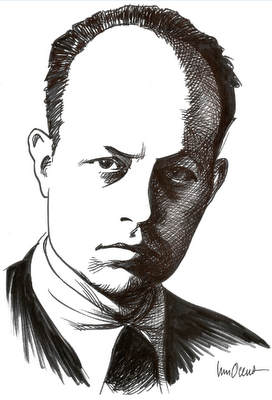 Hay un reclamo persistente en Drieu: “Voces falsarias y hueras me han acusado de que mi posición surge de un adaptarme a las formas políticas que se proyectan como victoriosas, en este momento de la guerra y que serían las dominantes en el futuro, todo ello es falso”
Hay un reclamo persistente en Drieu: “Voces falsarias y hueras me han acusado de que mi posición surge de un adaptarme a las formas políticas que se proyectan como victoriosas, en este momento de la guerra y que serían las dominantes en el futuro, todo ello es falso”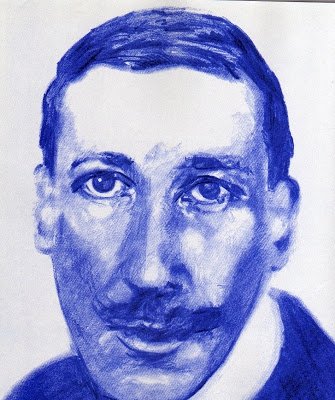 Sobre el particular apunta Drieu: “Me he convencido de que Guénon anuncia, con el lenguaje cifrado propio de la Tradición sagrada de los pueblos, que se aproxima un cambio drástico en la valoración de los hombres y en el sentido de la vida; en ello he visto a las nuevas fuerzas que se alzan contra los dogmas, al parecer inamovibles, de una civilización basada en el dinero, el materialismo y en formas políticas caducas”.
Sobre el particular apunta Drieu: “Me he convencido de que Guénon anuncia, con el lenguaje cifrado propio de la Tradición sagrada de los pueblos, que se aproxima un cambio drástico en la valoración de los hombres y en el sentido de la vida; en ello he visto a las nuevas fuerzas que se alzan contra los dogmas, al parecer inamovibles, de una civilización basada en el dinero, el materialismo y en formas políticas caducas”.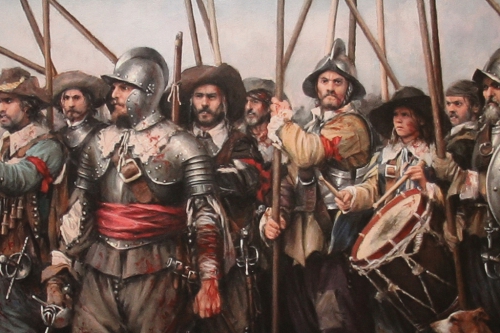
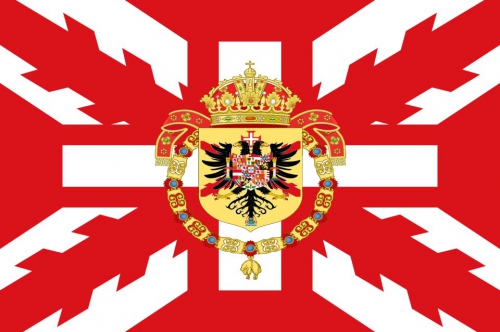
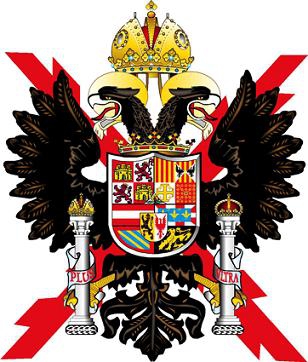 De por sí son destacables los conceptos de las ideas políticas de Imperio e imperialismo que presenta Jorge Luna Yepes, con una visión desprejuiciada y nada común en el Ecuador, por aportar con estas a un mejor y más pleno entendimiento de nuestra realidad política-histórica en el continente americano; donde la palabra Imperio se volvió sinónimo de la explotación capitalista estadounidense, siendo usual escuchar a los sectores ideológicos de izquierda –sobre todo- referirse despectivamente a Estados Unidos como “el imperio”, e incluso haciendo alusiones similares –en el sentido de explotación capitalista- a otros países, en particular a España por su claro pasado imperial en América.
De por sí son destacables los conceptos de las ideas políticas de Imperio e imperialismo que presenta Jorge Luna Yepes, con una visión desprejuiciada y nada común en el Ecuador, por aportar con estas a un mejor y más pleno entendimiento de nuestra realidad política-histórica en el continente americano; donde la palabra Imperio se volvió sinónimo de la explotación capitalista estadounidense, siendo usual escuchar a los sectores ideológicos de izquierda –sobre todo- referirse despectivamente a Estados Unidos como “el imperio”, e incluso haciendo alusiones similares –en el sentido de explotación capitalista- a otros países, en particular a España por su claro pasado imperial en América.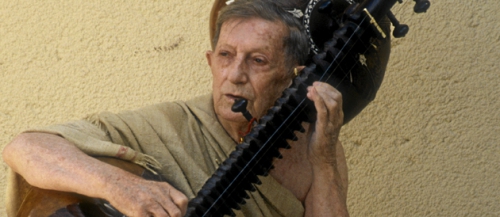
 Sur ces questions, alors que, sur d'autres points, Daniélou émet des réserves sur telle ou telle attitude, ou sur tel écrit de Guénon, l'accord entre les 2 auteurs est total, comme en témoigne cet extrait d'une lettre de R. Guénon à A. Daniélou, en date du 27 août 1947 :
Sur ces questions, alors que, sur d'autres points, Daniélou émet des réserves sur telle ou telle attitude, ou sur tel écrit de Guénon, l'accord entre les 2 auteurs est total, comme en témoigne cet extrait d'une lettre de R. Guénon à A. Daniélou, en date du 27 août 1947 :


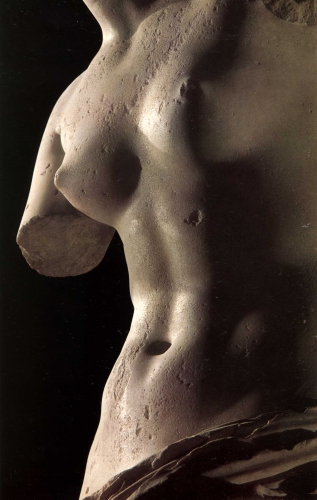 Perché i Greci non possiedono nel loro lessico una parola per dire “corpo”? Perché non possiedono una parola per dire “materia”? Ed affermano che essa come tale non esiste? (1) Perché quando parlano di “corpo” si riferiscono al “soma” cioè al “cadavere”? Fanno riferimento quindi al “corpo” senza vita, senza funzione, senza pensiero, sentimenti, coraggio, personalità, senza “Io” nel significato omerico (arcaico) e quindi tradizionalmente ellenico, come complesso multivocale e multifunzionale, ancorché unitario (2), di potenze della Vita simili a quelle cosmiche (gli Dei). Fanno riferimento pertanto ad un non-ente, ad un “niente”.
Perché i Greci non possiedono nel loro lessico una parola per dire “corpo”? Perché non possiedono una parola per dire “materia”? Ed affermano che essa come tale non esiste? (1) Perché quando parlano di “corpo” si riferiscono al “soma” cioè al “cadavere”? Fanno riferimento quindi al “corpo” senza vita, senza funzione, senza pensiero, sentimenti, coraggio, personalità, senza “Io” nel significato omerico (arcaico) e quindi tradizionalmente ellenico, come complesso multivocale e multifunzionale, ancorché unitario (2), di potenze della Vita simili a quelle cosmiche (gli Dei). Fanno riferimento pertanto ad un non-ente, ad un “niente”.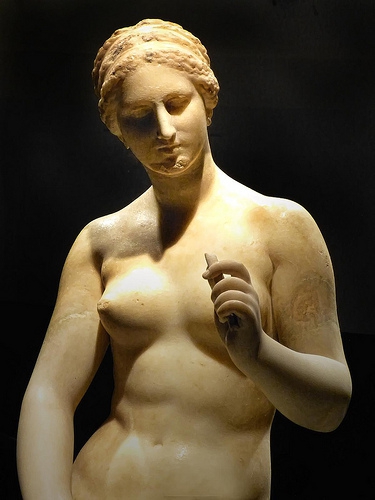 Inoltre Platone, tra le fenomenologie della “mania”, pur non indicando la forma guerriera, fa riferimento a quella erotica, a quella poetica come alla mantica, tutte molto simili alla Via Ultrasecca che è, per l’appunto, la Via del guerriero (vedi il concetto di “ménos” in Omero come “follia” e quello di “furor” nella cultura romana). (3)
Inoltre Platone, tra le fenomenologie della “mania”, pur non indicando la forma guerriera, fa riferimento a quella erotica, a quella poetica come alla mantica, tutte molto simili alla Via Ultrasecca che è, per l’appunto, la Via del guerriero (vedi il concetto di “ménos” in Omero come “follia” e quello di “furor” nella cultura romana). (3)